
Georgetown M A G A Z I N E Georgetown’s Signature Course Turns 50 FALL 2018
14
THE PROBLEM OF GOD
Over 50 Years, Georgetown's signature course has constantly evolved, yet the questions remain eternal.
20
10 YEARS OF OPEN WINDOWS
The LGBTQ Center stands at the forefront of a profound cultural shift on campus.
26
COSMIC CONNECTION
Built in 1843, historic Heyden Observatory still beckons stargazers.
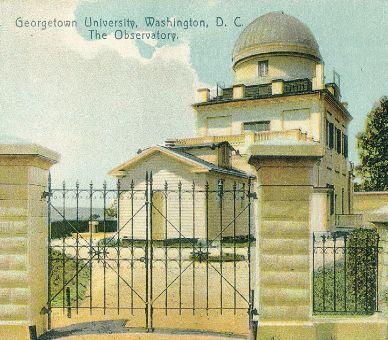
28
STILL PURSUING THE DREAM
Founded in the wake of D.C.’s 1968 riots, the Community Scholars Program has transformed lives and Georgetown itself.


03 CAMPUS NEWS
34 ALUMNI NEWS AND PROFILES
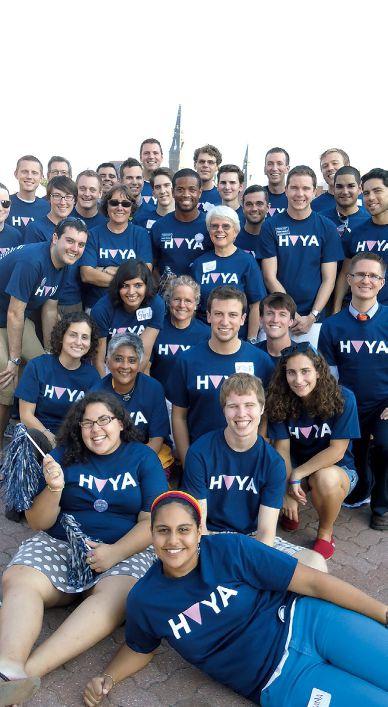
48 LIVES WELL LIVED
50 THE LAST WORD
FALL 2018 26 28 20 14
FROM THE EDITOR
I didn’t attend Georgetown, but I’ve spent more than 15 years working here and getting to know alumni. That’s a lot of reunions, John Carroll Weekends, small gatherings, and informal conversations.
In this time, I frequently hear alumni ask each other, “Who did you have for Problem of God?”
This signature course, celebrating its 50th year, is a key element of the shared Georgetown experience. I doubt that many other universities have a required class described by alumni as “beloved.” Long after they’ve left the classroom, alumni continue to think about the fundamental human questions raised in the course.
There are no statistics available before 1977, but from fall of that year through spring semester 2017, there have been 1,629 sections of the Problem of God taught to more than 53,000 students. Relive your memories and learn how the course has evolved, starting on page 14.
We didn’t set out to make this issue of the magazine an anniversary issue, but we feature two other important Georgetown anniversaries. The Community Scholars Program, founded 50 years ago to make a deeper commitment to D.C. schools, today includes high-achieving students from under-resourced high schools around the country. And our article about Georgetown’s pioneering LGBTQ Resource Center, now a decade old, highlights the crucial role it has played to provide visibility and to make Georgetown a home for everyone.
Celebrating great traditions is not solely about looking back. It’s also about looking forward in the Jesuit tradition of care for the whole person—and by extension for the whole community.
In that spirit, we’re pleased to report that Georgetown has two new key staff in alumni leadership positions. Julia Farr (C’88) is the new executive director of the alumni association. A third-generation Hoya—and a Hoya Mom—she’s the first woman to serve in the executive director role. Paul Lanzone (MBA’15) has returned to the advancement office as associate vice president for alumni engagement. Paul and Julia will be working in tandem to ensure a vibrant alumni experience. Read a bit more about them on page 36.
We’ve added some new features to the magazine. Let us know what you think and also add your thoughts to our feature articles at magazine@georgetown.edu.
—Jeffrey Donahoe
Office of Advancement
R. Bartley Moore (F’87) Vice President for Advancement
Amy Levin
Associate Vice President for Communications
Georgetown Magazine Staff
Jeffrey Donahoe, Editor
Kate Colwell, Campus News
Editorial Team: Omar Abubars, Chelsea Burwell (G’16), Kate Colwell, Lucy Flinn (C’86), Jane Malhotra, Patti North, Sara Piccini, Camille Scarborough
Erin Mary Greene, Executive Creative Director for Communications
Elisa Morsch, Creative Director Phil Humnicky, University Photographer Design courtesy of Washingtonian Custom Media
Georgetown Magazine 2115 Wisconsin Ave. NW, Suite 500 Washington, DC 20007-1253
Email: magazine@georgetown.edu
Address changes: 202-687-1994 or email alumnirecords@georgetown.edu
Fall 2018, Volume 50, Number 1 Georgetown Magazine (ISSN 1074-8784).
Georgetown Magazine is distributed free of charge to more than 185,000 alumni, parents, faculty, and staff. The diverse views in the magazine do not necessarily reflect the opinions of the editors or official policies of the university.
Postmaster: Please send changes of address to Alumni Records, Georgetown University, 3300 Whitehaven St. NW, Washington, DC 20007.
Georgetown University provides equal opportunity in employment for all persons and prohibits discrimination and harassment in all aspects of employment because of age, color, disability, family responsibilities, gender identity or expression, genetic information, marital status, matriculation, national origin, personal appearance, political affiliation, race, religion, sex, sexual orientation, veteran status or any other factor prohibited by law. Additionally, the university will use goodfaith efforts to achieve ethnic and gender diversity throughout the workforce. The university emphasizes recruitment of women, minority members, disabled individuals and veterans. Inquiries regarding Georgetown University’s nondiscrimination policy may be addressed to the Director of Affirmative Action Programs, Institutional Diversity, Equity & Affirmative Action, 37th and O Sts. N.W., Suite M36, Darnall Hall, Georgetown University, Washington, DC 20057, or call 202-687-4798.
©Georgetown University
A Degree of Difference
In the fall of 1955, Carlos Manuel Sera began his freshman year at Georgetown. In the spring of 2018, at age 81, he finally received his diploma.

During that 63-year gap, Sera became a successful international businessman, raised a family, and became a grandfather. But he always remained bothered that he had not officially graduated from Georgetown. “Not finishing was always there,” he told The Washington Post
The son of a Cuban diplomat, Sera had been forced to quit school in his senior year after the Cuban Revolution broke out. He was just four credits away from earning his degree.
This January, Sera’s granddaughter Vanessa Weitzman visited the Hilltop on a college tour. When she returned home and began asking him questions about his Georgetown experience, he finally confessed the truth to his family. His daughter Mayte Weitzman sent a letter to the university asking if there was anything that could be done.
The response was an emphatic “yes.” Georgetown arranged for Sera to take his final class from his home in Houston— Federal Income Taxation with McDonough School of Business Professor Thomas Cooke. Sera earned an A.
On May 18, Sera sat in his living room surrounded by his family, watching the Commencement ceremony via a special remote hookup. He stood as his name was called.
“Carlos, we know you’re watching from Houston,” said Paul Almeida, dean and William R. Berkley chair at McDonough. “We are tremendously proud of you and your lifetime of accomplishments.
“And, while you have always been a Hoya, today we make it official.”
Editor ’s note: Carlos Manuel Sera died on June 30.
To read more, go to the McDonough School of Business magazine, msb. georgetown.edu/Georgetown-business-magazine.
VISIT magazine.georgetown.edu 3
Photo: Michael Stravato for The Washington Post
CAMPUS NEWS
Carlos Sera is overcome with emotion as he receives his degree from the McDonough School of Business via a remote live connection from the May graduation ceremony. Sera earned his degree 63 years after he began his studies, which were interrupted by the Cuban Revolution.
First University-Wide Women’s Forum Inspires and Empowers
Nearly 500 attendees gathered at the InterContinental Hotel in Washington, D.C., on May 3 and 4 for the first universitywide Women’s Forum, sponsored by the Georgetown University Alumni Association and the Georgetown Law Center. The annual event has been held for Law Center alumnae and students since 1992.
The forum expanded to be more inclusive and to recognize a growing, nationwide movement to champion women’s issues.
“This is a pivotal moment in our nation’s history, when a highly diverse group of women are joining forces to demand equal opportunities and equal pay and to prevent discrimination and sexual assault,” said Melanne Verveer (SLL’66, G’69), executive director of the Georgetown Institute for Women, Peace, and Security, announcing the event earlier this spring. Verveer formerly served as the nation’s first U.S. Ambassador for Global Women’s Issues.
The 2018 Women’s Forum included distinguished speakers, panels, workshops, and networking opportunities. Its programming showcased women leaders from across the professional spectrum, among them television commentator Greta Van Susteren (L’79, L’83, H’13), Jennifer Stybel (C’03) of Project Entrepreneur, former Icelandic government minister Ragnheiður Elín Árnadóttir (MSFS’94), and four-time Olympic medalist Nancy Hogshead-Makar (L’97).

“We want this event to produce a network of women who support and amplify each other’s work,” said Julie Farr Connolly (C’88, Parent’18, ’21), one of the organizers and now executive director of the alumni association.
Georgetown partnered with Intelligence Squared U.S. (IQ2US) Debates to host a kickoff event at the Newseum the evening of May 2—a debate titled “Negotiations Can Denuclearize North Korea.” It was the first-ever all-women debate hosted by IQ2US Debates.
The following morning’s opening keynote featured Sally Yates, former acting U.S. attorney general and distinguished lecturer from government at the Law Center, in conversation with Miriam Vogel (L’01), her former associate deputy attorney general.
Yates recalled that in 1989, during her early days at the Justice Department, her supervisor would not assign her to the criminal division because “he thought it would be too rough-and-tumble for me there.”
Yates’s story mirrored the impetus to establish the Women’s Forum at the Law Center—to highlight women lawyers’ progress and to tackle persisting challenges. The initial forum was spearheaded by then-Dean Judith Areen, one of only a handful of female law-school deans in the country when she was appointed in 1989. Areen was a featured speaker at this year’s forum, along with law professor Jane Aiken, who chairs the university’s new Gender Equity Task Force.
4 GEORGETOWN MAGAZINE FALL 2018
Photos: Lisa Ryan Photography
Panelists for “Georgetown Update: The Past, Present, and Future” included law professor Jane Aiken, Rosemary Kilkenny (L’87, Parent’06), former law dean Judith Areen, and Ambassador Melanne Verveer (SLL’66, G’69, Parent’94)




VISIT magazine.georgetown.edu 5
Clockwise from left: Citlalli Alvarez (C’15) and Ebony Howard (L’07) on the “Hoyas for Racial Justice” panel; Marilyn Tucker, director of the Alumni Career Services & International Internship Program at Georgetown Law, and Mary Kogut (C’05, L’09) at the cocktail reception; Helen Brosnan (C’16), Dr. Stephany Rose Spaulding, Eva Guidarini of Facebook, and Denise Gitsham (L’07) on the “Rise to Run” panel; Quierra Wells (S’21), Shauntell Pinckney (C’15, MPP’19), and Nia Hightower (EML’16).
NHS Professor Catches the Scent of Fresh Discoveries
Every day, Blythe Shepard, assistant professor of human science at the School of Nursing & Health Studies, runs along the C&O Canal in Georgetown to think. She never wears headphones, preferring to listen to wildlife sharing her refuge inside the city and let possibilities for new research wash over her.
One day, she turned a new bend on her route toward campus and suddenly the Washington Monument rose before her.
“I had no idea that you could see the monument from that angle,” she says. “You don’t realize it’s there. But then you think that view was probably part of the architectural design.”
Like the Washington Monument’s location, proteins are considered extremely well-mapped. But Shepard’s research team is finding that, like views of the monument, new levels of detail can reframe longtime understandings—in this case about how tissues work.
“What I love about this research is that you think you understand an organ system, and yet we’ve stumbled onto a complete unknown,” she says. “This is a whole new field, and you never know what you’re going to discover.”
Shepard was part of a team of researchers who were the first to discover that microscopic olfactory receptors—the kind found in the nose that allow organisms to smell—are also present in the kidney. Similarly, Shepard’s colleagues in the field have discovered opsins, or sight receptors, in human blood vessels.
At Georgetown, Shepard and her undergraduate research assistants are mapping sensory receptors in the liver. Their mission is simple: Find the receptors’ specific locations in organs, identify what activates the receptors, and determine their functions. The

‘This is a whole new field, and you never know what you’re going to discover.’
potential impact of their findings, Shepard says, are endless. For example, she has previously discovered how one olfactory receptor, Olfr1393, regulates transporters that retain glucose in the blood when filtered through the kidneys, a major boon to understanding how to control blood-sugar levels in people with Type II diabetes. Other labs have found that receptors affect muscle regeneration, skin-wound healing, sperm movement, blood-pressure regulation, and glucagon secretion by the pancreas.
If Shepard’s Georgetown team can learn more about the receptors’ roles in the liver for controlling metabolism, breaking down drugs, and detoxifying alcohol, they may be able to identify new therapeutic targets.
6 GEORGETOWN MAGAZINE FALL 2018
Photo: Phil Humnicky
Blythe Shepard (center) and her research team, including Ryan Kurtz and Lily Steinberg (C’20), focus on the role of microscopic olfactory receptors in metabolic diseases.
—Blythe Shepard
Georgetown Holds Conversations on Legacies of Slavery
In April, at the National Museum of African American History and Culture, Gayle Jessup White—a descendant of Thomas Jefferson and community engagement officer at Monticello—conversed on stage with Melisánde Short-Colomb (C’21), a descendant of Abraham Mahoney and Mary Ellen Queen, who were among the 272 enslaved men, women, and children sold by the Maryland Jesuits in 1838. Short-Colomb, 64, is in her second year at Georgetown and works in the Georgetown Slavery Archive in the Booth Family Center for Special Collections.

“I know that I am here in this place at this time because those people prayed for me,” Short-Colomb said. “They prayed me into existence. They prayed me into being, and 180 years ago, somebody had a dream, and it was me, and here I am.”
Rev. Brandon Harris, Protestant chaplain at the Law Center and Main Campus, and Heidi Tseu, director of local government affairs, organized the event, “We Choose to Remember: A Conversation on the Legacies of Slavery,” to reflect on racial justice 50 years after the assassination of Dr. Martin Luther King Jr. This and other events commemorating King’s assassination fell within the university’s “Let Freedom Ring!” Initiative, named after King’s 1968 speech, “I’ve Been to the Mountaintop.” The initiative opened dialogues around urgent
problems requiring social action and explored Georgetown’s capacity for social change.
“The 50th anniversary marks a watershed moment that has sparked an outcry across not only our country but the world, and particularly Washington, D.C., and Georgetown,” says Andria Wisler, executive director of the Center for Social Justice Research, Teaching, and Service, who co-chaired the overall initiative with Patricia Grant, senior associate dean for the undergraduate program in the McDonough School of Business.
The roster of commemorative events wove together activism and art through teach-ins, music, and worship services, unarmedcivilian protection trainings, a virtual-reality immersive experience on mass incarceration and solitary confinement, book talks, film screenings, spoken-word poetry performances, and expert-panel discussions spanning the historical to the contemporary.
“If you are afraid of history, can you please account for the harm you are doing today?” said Marcia Chatelain, provost’s distinguished associate professor in the history department, at the April event. “For those people who are descended from the slaves of Georgetown, this is not a perfect puzzle piece. The pieces are torn and tattered. But they can still fit together. Georgetown is providing us a place to confront the hard truths of history.”
VISIT magazine.georgetown.edu 7
Photo: Rafael Suanes
Gayle Jessup White, left, a descendant of Thomas Jefferson, listens as Melisánde Short-Colomb (C’21) speaks during a panel discussion at the National Museum of African American History and Culture as part of Georgetown’s April Emancipation Day observances. Short-Colomb is a descendant of Abraham Mahoney and Mary Ellen Queen, who were among the 272 enslaved men, women, and children sold by the Maryland Jesuits in 1838.
Maker Hub Celebrates International Successes in Innovation
Refugees have immediate needs of water, food, medicine, and shelter. But they also need something else to start their lives anew: a credit score. To help migrants and refugees build credit, a cross-disciplinary team of students organized by the Georgetown University Library’s Maker Hub—in partnership with many university programs and with the generous support of Molly (G’11) and Steve (F’79) Cashin (Parents’10, ’13)—dreamed up a system called Credit/Ability.
In March, Credit/Ability took first place in the Migrants and Refugees category at VHacks, a 36-hour hackathon competition held at the Vatican that leverages technological innovation to advance social inclusion, interfaith dialogue, and the welfare of migrant peoples and refugees. The team has since moved its operations to the WeWork Venture Lab near the White House—a space made possible by a $1.5-million gift from Ted Leonsis (C’77) and his family—to make the idea a reality.
The Maker Hub, a fulcrum of innovation at Georgetown, is buzzing with success stories of students and alumni improving the world through new inventions. When the hub launched a course extension, one student, Kate Bonner (C’20), who was struggling with a formidably complex physics concept—probability density-wave functions traversing through time and space—came looking to develop a better way to comprehend the science. Through the extension, she developed a virtual-reality program to help students learn particle-level physics through immersion and is now looking at ways to fold animation and coding into her career path in physics.
Recent Law alumnus Dalton Dwyer (F’11, L’18) used to daydream as he looked out his law classroom window at industrial-sized cranes working nearby. He realized that the cranes were not operating at peak safety and developed an idea to make construction work safer. He has since sold six of his devices, has orders for two more, and built them all at the Maker Hub.
When other professionals in the field came knocking, hoping to exchange their expertise for time with the hub’s equipment, the hub created the Maker Neighbor program. Through a supervised volunteer program based on the skill-sharing economy, the growing community has added artisans in printmaking, electronics, and programming.
Most recently, the Maker Hub has branched out into television. A Georgetown team earned a place in the televised Make48: World’s Fastest Invention Competition in October 2018. Team members are sworn to secrecy regarding the results of the competition until it airs live on PBS.

Despite all these successes in turning wild ideas into physical objects, Maker Hub manager Don Undeen says the hub’s greatest lesson is teaching students how to fail better.

“The point is to set up a situation where students are expected to fail, and through that experience begin to see failure as an opportunity to reflect, iterate, and grow.”
Learn more about the Maker Hub at http://library.georgetown.edu/ makerhub
8 GEORGETOWN MAGAZINE FALL 2018
Photos: Dalton Dwyer and Don Undeen
The team developing Crane Cam (pictured right) has used the Maker Hub to bring their construction safety product to fruition.
Using Analytics to Demonstrate Gun-Violence Patterns
Frederic Lemieux is professor of practice and faculty director of the Master’s of Professional Studies in Applied Intelligence program at the School of Continuing Studies. His research interests focus on intelligence, national security, homeland security, and cybersecurity. A criminologist by training, Lemieux has been studying mass shootings since 2012. [Editor’s note: Congress defines a mass shooting as the murder of three or more people in a single incident.]
How do you study mass shootings?
I bring different methodologies to questions about crime and security, including mass shootings. My research team and I are putting out the first nationwide database on mass shootings integrating data from various sources. We can now give an overview of mass-shooting data from 1966 to 2016. We’re finalizing the 2017 data and entering the 2018 data now. We will have the most up-to-date and comprehensive database available.
Which sources do you use?
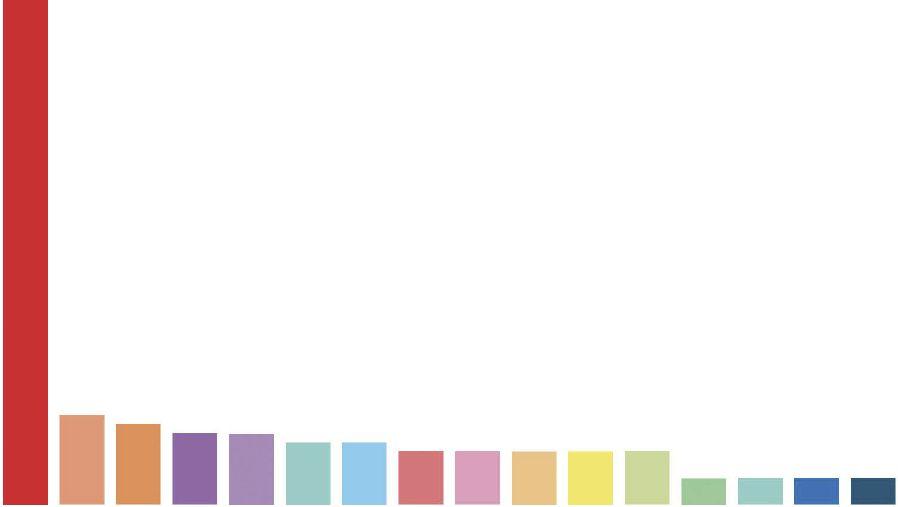
The Centers for Disease Control and Prevention is barred from studying firearm injuries and deaths. But data is tracked by some private places: Stanford University, The Washington Post, Mother Jones magazine, and Georgetown University. An FBI database has tracked 2000–2016. Not all the data collection uses the same rules and definitions, and so we work to ensure that all the data was consistent.
What does the data show?
Between 1983 and 2013, the U.S. had 78 mass shootings. That’s nearly double the number of mass shootings recorded in 24 Western countries for the same period. Gun ownership and mass shootings are highly correlated. It is important to mention that the 24 Western countries have more restrictive gun laws in terms of availability of certain types of firearms and more comprehensive background checks.
How are you sharing your findings?
We’ve generated some academic publications. In June, the National Institute of Justice, an arm of the U.S. Department of Justice, invited me to participate in a one-day seminar. Despite the ban on research, people in the government really do want to study this phenomenon, so they need data like ours.
What’s next for your research team?
We’re looking at integrating topics like social media into the data. What is the role of social media in the shooter’s decision-making process? Does social media create a kind of alternative reality that bolsters potential shooters?
We also plan to map the data to find specific communities with repeated events. Are there any factors that will predispose a community to experience mass shootings? What in the community generates the conditions for shootings? We don’t know, but it is something to be studied.
Source: Scientific American
VISIT magazine.georgetown.edu 9
Between 1983 to 2013,
United States GermanyFranceCanadaAustraliaNewZealandUnitedKingdomBelgiumHollandSwedenAustriaFinlandSpainPortugal SwitzerlandNorway 7876433222221111 4 30 YEARS OF MASS SHOOTING BY COUNTRY
Illustration: Catrell Thomas
119
mass shootings took place around the world. 66% were in the U.S.
SFS Institute Wrestles With New Global Migration Challenges
Consider these projects underway at the School of Foreign Service Institute for the Study of International Migration (ISIM): a National Science Foundation-funded project examining how environmental disruption drives migration in Bangladesh; seeing how big data can create indirect indicators of forced displacement helping to prevent mass migration before it occurs; developing a “toolbox” of policy guidelines for countries relocating citizens to protect them from disasters and environmental change; and understanding durable solutions for forced displacement in Iraq.
Founded 20 years ago, ISIM looks at these issues and more from diverse perspectives. The work could not be more timely; events over the last few decades have increased public awareness of cross-border refugee movements.
But less is known about internally displaced persons (IDPs) who remain within their country’s borders. They are estimated at more than 40 million worldwide but receive less assistance than the estimated 20 million cross-border refugees. Furthermore, the U.N. has no binding international treaty on IDPs.

Elizabeth Ferris, research professor and interim director of ISIM, wrote for the Brookings Institution that while the world
is facing a displacement crisis, “it is primarily a crisis of internal displacement, of protracted displacement, of failing to prevent conflicts, and of fine-tuning our systems to better address the needs of those forced to flee.”
Earlier this year, as the Global Compact for Refugees was negotiated at the U.N., ISIM and the Exodus Institute brought together some of the world’s leading international experts to highlight IDPs and draft recommendations for the World Refugee Council to strengthen responsibility-sharing among countries. These included calling for a high-level panel on internal displacement, improving transparency about IDP funding, and taking action to resolve situations of protracted internal displacement.
“Because of its location, global presence, and mission to serve, I know of no other school better situated to address the issue of international migration than Georgetown,” says Katharine M.J. Donato, the Donald G. Herzberg Chair in International Migration. “As part of a foreign-service school, rather than a traditional social-science department, scholars trained in a wide variety of disciplines come together to examine the world’s toughest challenges related to human mobility.”
10 GEORGETOWN MAGAZINE FALL 2018
Photo: Getty Images
The Institute for the Study of International Migration at SFS studies a range of complex contemporary issues such as forced migration from environmental and political causes.
New Task Force to Focus on Gender Equity at Georgetown
In March, Georgetown President John J. DeGioia announced the creation of a university-wide Gender Equity Task Force to assess how gender equity can be strengthened and encouraged among faculty and senior leadership.
Chaired by Jane Aiken (L’85), former vice dean and professor of law at Georgetown Law, the task force’s working group of 22 faculty members and two staff advisors is assessing institutional practices that lead to improved gender equity, looking at ways to measure accountability, and recommending specific, actionable steps that Georgetown can take to achieve its goals.
“Promoting gender equity doesn’t just ensure better outcomes for women; it ensures better outcomes for the students we teach and the research we produce,” Aiken says.
The task force, which began its work in April, will present its recommendations to DeGioia at the end of the 2018-2019 academic year.
“The fact that this is a presidential task force is very meaningful because it signals the institution’s broad support for the issues of equity and justice,” says Michelle Ohnona, a task-force member who will be chairing the subcommittee on teaching, learning, and curriculum. Ohnona is a professorial lecturer in the Women’s and Gender Studies program and program
manager for diversity initiatives at the Center for New Designs in Learning and Scholarship.
Ohnona says the task force’s initial work will reflect the needs of faculty and senior leaders from various backgrounds and in the future will add the perspectives of staff, AAP (academic and administrative professionals), and students.

“A lot of these issues are not unique to Georgetown, but there are specific ways in which inequity manifests itself here,” she adds. Ohnona says the committee aims to take as intersectional an approach as possible. “We don’t see the work of the task force being altogether detached from the goals around equity that the institution has articulated for itself, like racial justice and compensation. We see the task force as being embedded in all of those conversations.”
“Women hold a majority of faculty and staff positions at Georgetown, but majority isn’t the answer,” Aiken says. “We know that some fields have a label of ‘women's work,’ and we want to recognize that there are disadvantages to that valuing system. I think now is an amazing time to be at Georgetown.”
Georgetown is one of 10 universities worldwide recognized by the United Nations as a HeForShe impact champion for gender equity.
VISIT magazine.georgetown.edu 11
Photo: Paul Jones
Jane Aiken (L'85, Parent'14), Professor of Law and Gender Equity Task Force Chair
Medstar Georgetown Anesthesiology Team Recognized for Protocols to Prevent Post-Surgical Opioid Addiction

According to an NIH study, of those who began abusing opioids in the 2000s, 75 percent reported that their first opioid was a prescription drug. As the opioid crisis in the U.S. intensifies, the urgency to use safer post-surgical painmanagement alternatives increases. Over the past 10 years, anesthesiology professor Joseph Myers, M.D., has built a program at MedStar Georgetown University Hospital to mitigate operating-room contributions to opioid addiction.
“Anesthesiologists have the ability to not only help prevent addiction but to avoid relapse in recovering addicts who need surgery,” says Myers.
This year his team was recognized by the American Society of Anesthesiologists and awarded first place for its “ComfortSafe Program: A Safe Path for Patients in Recovery From Opioid Addiction.”
“I realized that opioids were causing a lot of problems in the operating room—patients’ blood pressure would drop, and we’d be resuscitating some very sick patients because they couldn’t tolerate opioids,” says Myers. “So instead we started using local anesthesia along with a variety of non-opioid analgesics, such as ketorolac and IV acetaminophen.” Patients were waking up without pain or the
predisposition to addiction. “The truth is, almost any surgery can be done without opioids—especially before and during the anesthesia.”
The ComfortSafe anesthesia protocol is a checklist of methods and modalities of non-opioid analgesics that patients can choose from—including any type of music.
“We suggest classical or smooth jazz, but some patients will pick Springsteen,” Myers says.
Myers finds that music has a powerful effect on everyone in the operating room.
“Staff are typically rushed and driven by the clock,” Myers says. With music, their voices get lower, slower, and more hushed. “The family sees their loved ones going into surgery with Joshua Bell being played and they think, ‘Oh, my gosh, he’s in good hands.’ You gain trust and confidence from patients when they sense you are performing the surgery the way they want. You’re listening to them, and they have a little bit of control restored to them.”
For more information on the ComfortSafe anesthesia protocol, contact Joseph.Myers@gunet.georgetown.edu.
12 GEORGETOWN MAGAZINE FALL 2018
The team from MedStar Georgetown University Hospital earned honors for its research to mitigate operating-room contributions to opioid addiction. “Almost any surgery can be done without opioids,” says study lead Dr. Joseph Myers (front row, second from left).
Photo: Terri Navarrete
Why Are Arrests for D.C. Girls So High?
Nataly Del Valle is a recent graduate of the University of the District of Columbia who works as a youth peer advocate at the D.C. Department of Youth Rehabilitation Services. She’s a successful young woman excited about a career path of helping at-risk young people in the District.
She also remembers her former life when she was in D.C.’s foster-care system, caught stealing, arrested, and led away in handcuffs after an altercation with her grandmother.
New research conducted by Georgetown Law Center’s Juvenile Justice Initiative (JJI) shows that arrests of girls in D.C. have risen by 87 percent over the last decade, while overall arrests for boys have dropped 22 percent. Black girls (defined as under age 18) are 30 times more likely to be arrested than their white female and male peers.
Del Valle’s experience gives these statistics a story. She has become a spokesperson on the issue, appearing on WAMU Radio’s “The Kojo Nnamdi Show” in April. With her on the program was Eduardo Ferrer (B’02, L’05), JJI policy director. Ferrer led the research study and authored the report “Beyond the Walls: A Look at Girls in D.C.’s Juvenile Justice System” with the human-rights organization Rights4Girls.
Ferrer had heard about gender disparity in arrests anecdotally, which was the impetus for the study. “While the trend is consistent nationwide, the increase is disproportionate in D.C.,” he says.
The research also shows that girls are being arrested at younger ages and for less-serious crimes—simple assault, truancy, shoplifting, public disturbance—than boys. “It’s evident that young girls’ behavior is increasingly becoming criminalized,” Ferrer says.
The new research is consistent with other findings coming out of Georgetown Law’s Center on Poverty and Inequality, which found that adults view Black girls as less innocent and less needing of protection and nurturing than white girls.
Established in 2015, JJI works to improve the level of representation that youth receive in the region and make D.C.’s juvenile justice system the smallest and best in the country. The Initiative grew out of the Law Center’s pioneering Juvenile Justice Clinic, which trains law students under faculty supervision to represent D.C. youth in legal cases.
With the research in hand, Ferrer says future work can focus on investment at the community level. In addition to pervasive issues like poverty and lack of family and school support, girls are more likely to be victims of trauma, including sexual abuse, than boys. “We know what to do,” Ferrer says. “We know where to invest; we know we can have trauma counseling and support.”
As for Nataly Del Valle, she says, “The thing is for me is to give back to the community. I went through what I did for a reason.”
ARRESTS
ARRESTS OF GIRLS HAVE INCREASED 87%
In 2007, fewer than 1 in 7 youth arrests were girls. Since 2013, more than 1 in 4 youth arrests were girls.
Source: Georgetown Juvenile Justice Initiative and Rights for Girls rights4girls.org/news
VISIT magazine.georgetown.edu 13
GIRLS MAKE UP AN INCREASINGLY LARGER PORTION OF D.C.’S JUVENILE JUSTICE SYSTEM
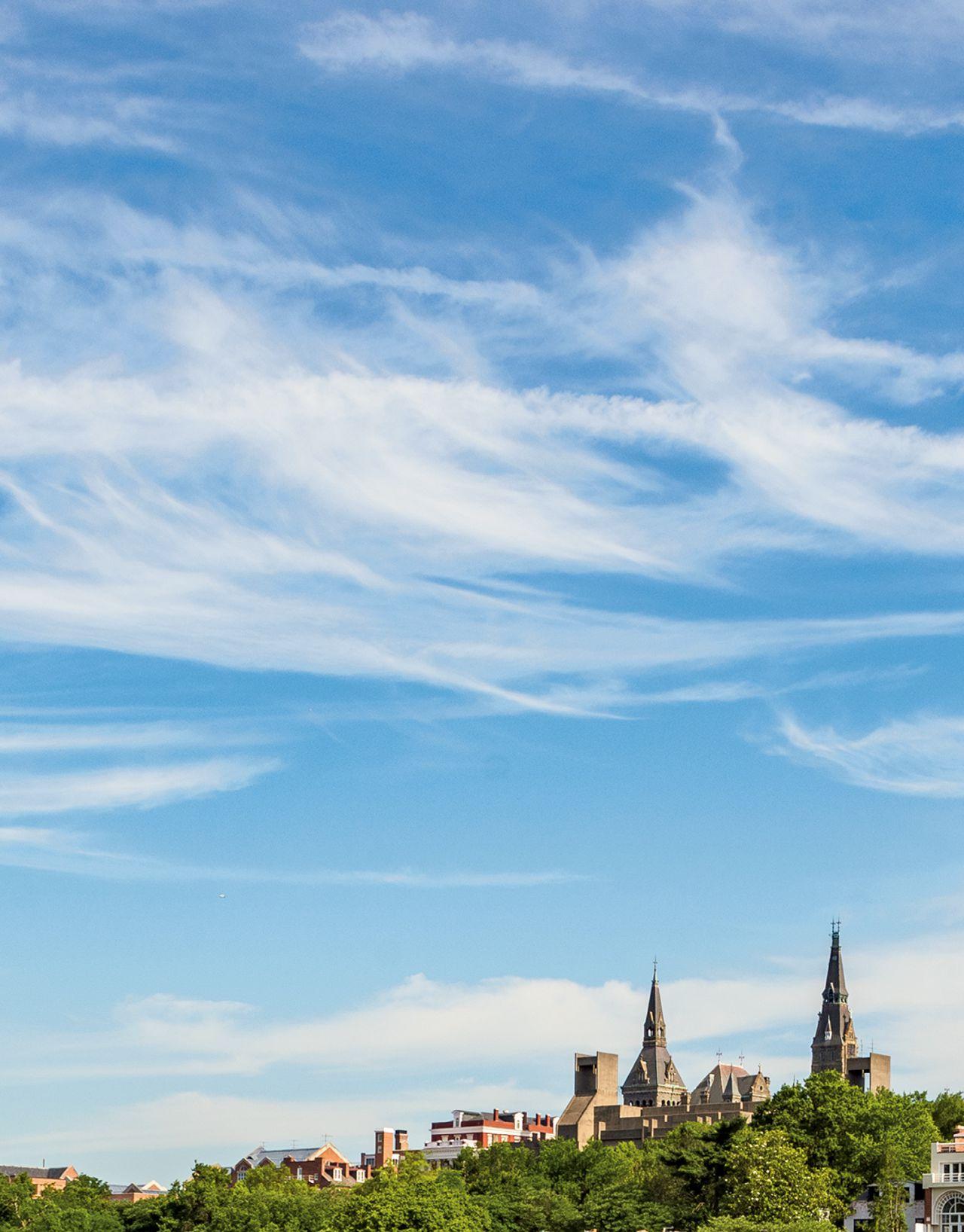 by JANE VARNER MALHOTRA
by JANE VARNER MALHOTRA
eunion 2018 is underway, with a packed schedule of Saturday afternoon activities for returning alumni. Walking tours, social hours, and department open houses abound, all under the sparkle of an early summer sky.
So why are throngs headed to the auditorium in the basement of ICC?
For another hour of Problem of God, of course!
A panel of theology professors has assembled to discuss the required freshman-year course at Georgetown that now celebrates its 50th year. All of the 300 seats in the auditorium are full before the program begins, and standing attendees line the aisle as a few more people seat themselves on the steps.
Alumni gather to revisit a signature first-year experience: taking a critical look at the religious dimension of human existence.
“We invite them to take an interiority turn,” says panelist and beloved professor Otto Hentz, S.J. “We explore what I like to call ‘the basement issues’ and those fundamental questions like ‘What does it all mean?’ It’s critical to a liberal arts education. The Problem of God course asks that question very directly.”
Along with curious spouses, friends, and a few reluctant teenage offspring, alumni of all ages are here. What’s the draw? Apparently, they didn’t get all of the answers to these questions while they were students:
Who am I, why am I here, and where am I going?
Who is God? Why is God?
Backing up a bit: Is God?

ENCOUNTER WITH WORLD RELIGIONS
The freshman course began in the fall of tumultuous 1968, on the heels of Vatican II, when the Catholic Church— and the United States—took a renewed look at ethical questions around social justice issues like racism, sexism, poverty, and war. The course was developed by Bill McFadden, S.J., chair of the theology department, in collaboration with colleagues Monika Hellwig, Jim Thomasson, and Jack Haught.
Hentz has watched the course evolve since he began teaching it in 1973. “In the beginning, the problem of God was handled as a Western problem,” he says. “Does God exist? How do we know? Can we know? What is God like? What are the challenges we face, especially the problem of evil? What about religious language, and how can we talk about God?”
Originally taught by priests, today the 50 sections of Problem of God are led by Jesuits and non-Jesuit faculty from different faith traditions, cultural backgrounds, and research specialties, representing the broadening scope of the theology department. They are teaching a generation of students who reflect the religious pluralism alive today, a growing skepticism about the role of faith and organized religion, and the increasingly interconnected global culture.
“When I was growing up, I never heard the word ‘Buddha,’” Hentz says. “Philadelphia was one big monastery in those days—every quarter mile there was this massive stone church, a big rectory, a big convent, and a big school. And life revolved around the parish. All sorts of rules and so forth. It never occurred to anyone to miss Mass on Sunday,” he adds. “But over the years, we have had more encounters with world religions.”
The core questions asked in Problem of God—of ultimate meaning, of God and religious experience—remain consistent, says Hentz.
“We’re not doing catechism here, nor is it a tour of a religious museum—‘Isn’t that charming!’ and so forth. The course is a sophisticated intellectual inquiry and analysis, with a very specific existential challenge. We are engaging in fundamental human questions that need some sort of answer, however tentative.”
ENGAGING SKEPTICAL STUDENTS
According to a 2014 Pew Research study, the number of religiously unaffiliated (widely called “nones”) Americans is on the rise. Those who self-identify as atheists or agnostics, or whose religion is “nothing in particular,” represent 23 percent of adults in the U.S., up from 16 percent in 2007.
Hindu chaplain and Sanskrit scholar Brahmachari Sharan, who has taught Problem of God for two years, says incoming students reflect this national trend. Many arrive at Georgetown with no religious background, along with some arms-crossed skepticism about a required course in theology. However, inevitably Sharan sees a visible shift for many of these freshmen—even within that first 50-minute class period.
“There are always a few who are adamant and upset about having to take the course, and those who are not interested in religion whatsoever,” he says. “But you can see the change in their demeanor after just one lesson. They go from being slouched and saying, ‘I can’t believe I have to be here,’ to sitting up straight in their chairs, engaged.”
Teaching freshmen is a challenge—but also a rich opportunity, agrees Hentz. “You get the first crack at getting students interested in these fundamental issues.”
Like many of the professors, Sharan has the students intro-duce themselves through a personal essay and, based on those responses, guides the curriculum over the semester to address not only the core questions but also the emergent issues of concern for each cohort. The role of religious institutions is one example.
“In one of my classes, the students became very interested in the phenomenon of institutions, especially when we touched upon how many of the founders of religious traditions didn’t intend on setting up a religious institution, and yet some of the most intense and ancient institutions on the planet are religious ones.” Class discussions looked at how these institutions grow up, how systems are actualized, how inconsistencies are dealt with, why there is a need for institutions, and how to modernize them. “All this came up from a couple of comments students made, and it turned into a really interesting part of the course,” Sharan says.
“The course opens up students who have one fixed worldview to the myriad worldviews that form our society today. Without that knowledge, they could become fundamentalist in their own worldviews,” he adds.
STILL FIRED UP
“Professor Joe Murphy was blowing my mind on a weekly basis,” recalls Hillary Thomas-Lake (F’88), who came to Georgetown at age 16 from Barbados. Raised in the Anglican Episcopalian practice, she grew up surrounded by a complex tapestry of cultural and religious traditions, such as Obeah and Vodou.
Part of Murphy’s scholarship focuses on the expressions of West African culture and religion in the New World and the origins of adaptive-faith traditions like Santeria
16 GEORGETOWN MAGAZINE FALL 2018
and Candomblé. His passion for the subject was infectious. The Problem of God course quickly gained personal relevance for Thomas-Lake and sparked a lively reconnection to family at home.
She recalls studying syncretic religions and “the ways enslaved West Africans with animist religious traditions kept their beliefs alive on plantations, finding alignments between Christian saints and their own deities. I was calling my parents each week to talk about what I was learning. We’d trade stories and send each other books. It lit a fire for me.
“I’m one of seven kids, and at home on holiday I would dominate the conversation with my enthusiasm for this class,” she laughs. “And 34 years later, I’m still fired up!”
New graduate Adam Daly (C’18) discusses Problem of God, which he took with Hentz his freshman year, with similar enthusiasm. Both of his parents—Joan Corsello Daly (N’84) and Patrick Daly (C’84, M’90)—took Problem of God, and Patrick also had Hentz for the course.
Hentz engages with students from all religious backgrounds, Adam Daly says, “not just the Catholic crowd. That helps us think more critically about our own traditions. At Georgetown, you have to relearn what you thought to be true. I’d gone to public high school and had never taken a theology course or been challenged about what I thought I knew about religion. But this course put a critical lens to it.”
Daly enjoyed the couple of times during the course when Hentz, in a longstanding tradition, invited the students to class in his Village A apartment for a spaghetti supper. “He let us guide the conversation more, and it changed the way we students interacted with each other. We became more comfortable listening to polarizing views, because we could let our guard down in that informal setting.”
Thomas-Lake has discovered that the content of the course grows increasingly relevant with each passing year. “It’s like a little note granny tucks in your suitcase, and you only find it later when you’re home cleaning out your bag. And it’s full of goodies and wise words and a treat or two or a gem of some kind, all these years later.”
THE STUFF OF OUR LIVES
Theology professor Erin Cline has been teaching the course for 10 years. Trained in classical Chinese texts and comparative religion, Cline divides her Problem of God course into three parts—whether God exists, whether God is always central to religious life, and challenges to faith and responses to them.

VISIT magazine.georgetown.edu
17
Who am I, Why am I here, and W here am I going?
Why is God?
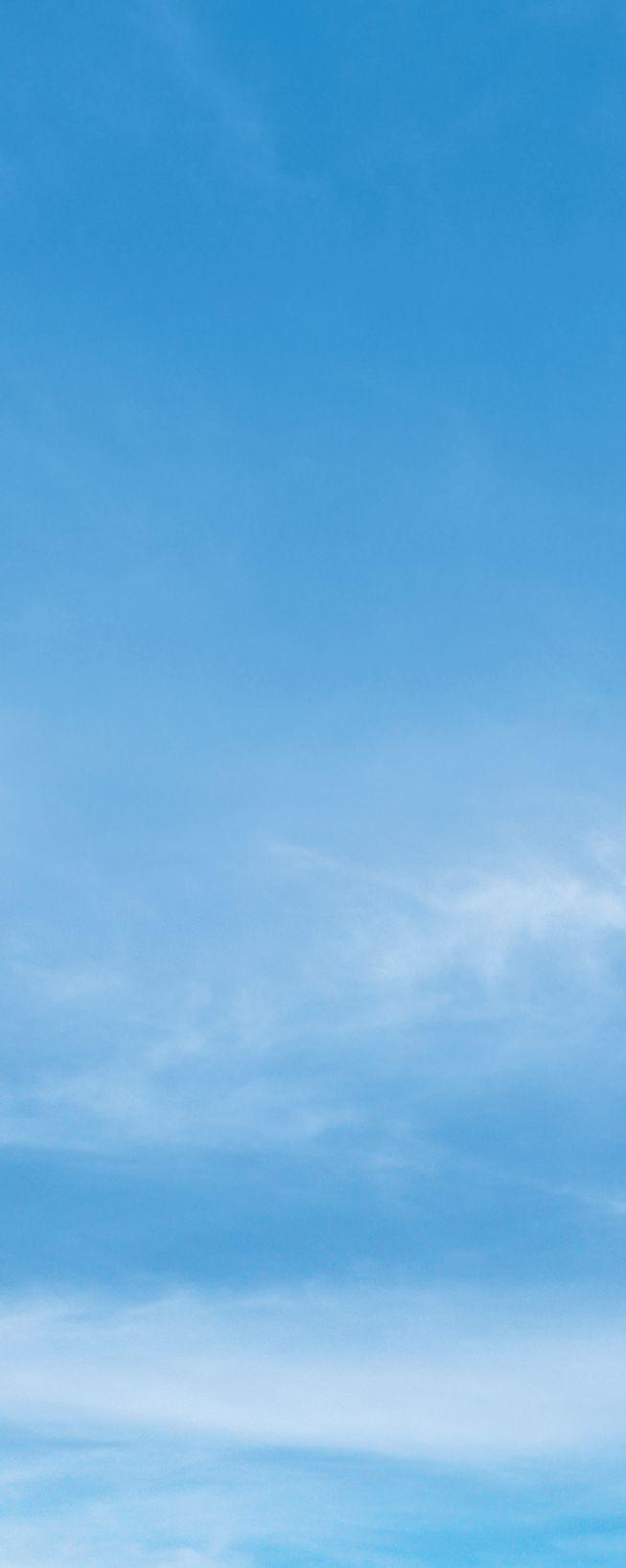
Who is God? Is God?
She begins by introducing students to classical arguments for God’s existence in the Christian tradition, looking at works by St. Thomas Aquinas, Anselm, William Paley, and others, then moves into Hinduism, Confucianism, and Daoism, and Augustine’s confessions, concluding with the Jesuit tradition.
“A big part of what we’re trying to do in the course is to get students to reflect not just in an abstract way on these interests,” Cline says. “We want them to think about these issues in relation to their own lives, their own spiritual lives, their own religious journey.”
“Professor Cline transformed us,” says sophomore Amber Stanford (C’21), a government major who now plans to minor in theology. Raised a Protestant in Upper Marlboro, Maryland, she enjoyed the discourse among students that Cline fostered in the classroom. “I realized that it isn’t about finding one answer, but about the search for your answer that matters,” Stanford says.
Putting students into small discussion groups, Cline ensured a mix of beliefs in each subset, and through her own example nurtured their sense of compassion and empathy through deep listening, adds Stanford. “Her expertise in Chinese philosophy and her teachings on filial piety created for us a really personal connection with the content.”
At the reunion-weekend panel, Cline notes that teaching Problem of God is both a challenge and a gift—something that became particularly evident to her last semester when, two weeks into the term, her father passed away suddenly. She traveled back to Alaska to help plan his funeral and bury him, and when she returned to teaching, it was a struggle.
“I realized that in Problem of God, we are also talking about death and loss. We talk about some of the deepest sources of pain we experience—and also the deepest sources of love. It’s the stuff of our lives. The class can be a painful experience, and I see that in my students as well, as we touch on different topics and they are reflecting on different experiences, and it becomes a collaborative and cooperative endeavor.
“It impacts all of us.”
SWIMMING IN THE GRAY OF TODAY
In a classroom in the Walsh building, on the wall near the door, a crucifix hangs next to a fire alarm, a thermostat, and a clock. Students wearing sweats, earbuds, and headscarves trickle into their morning section of Problem of God holding coffee cups, iPhones, notebooks. They nod to the priest professor and settle in for what becomes an engaging discussion of readings on deep ecology and ecofeminism.
GEORGETOWN MAGAZINE FALL 2018
18
At the same time, another section of Problem of God is underway down the street, through the Healy gates, and across the lawn in White-Gravenor. There students gather in Taraneh Wilkinson’s class to explore ideas of God as nature, and science versus religion. Like the students, Wilkinson is new to Problem of God this year. She earned her doctorate in 2017 from Georgetown in religious pluralism and brings her background in Turkish theology and comparative mysticism to the course. She notes that many students struggle with ambivalence. “I am frequently dumping students into the gray areas, and I tell them, ‘It’s okay! You can swim!’ ” she says. She expects them to come away from the course religiously literate, having engaged in arguments that don’t always represent their own thinking, learning to listen to their peers and analyze cultural artifacts for religious themes.
“The Problem of God is elusive,” says her theology colleague Hentz. “These students are used to dealing with stuff, so to speak, that’s ‘out there’—cutting up frogs or analyzing models of government or learning facts of history. They are not used to engaging what cannot be empirically mapped or calculated. It’s a whole new way of thinking for them.”
Hindu chaplain Sharan adds that “Georgetown wants students to develop a lifelong connection to the spirituality of the Jesuits. I’m not talking about the religion of Catholicism—a person might be a very good Catholic—but the Ignatian approach to spirituality asks for a little more critical engagement than basic ‘I know how it is: This is black and this is white, there is no gray.’
“Ignatian spirituality says to find the gray and live in it,” Sharan said. “And this will result in progress that the world desperately needs at this time.”
Exercising Your Spiritual Mind
At the reunion panel, several alumni asked faculty for recommendations on how to keep exploring the Problem of God questions after graduation.
Theology professor Erin Cline suggests finding one of a growing number of Ignatian retreats available around the country or looking for events at a nearby Jesuit school or parish. Online resources are also available:
• Videos, meditations, and writings on the Ignatian spiritual exercises from the late Georgetown community member Howard Gray, S.J., to Kevin O’Brien, S.J. (C’88): https://www.ignatianspirituality.com/ignatianprayer/the-spiritual-exercises
• Georgetown’s Woodstock Theological Library
• Irish Jesuits and Sacred Space daily prayer: https://www.sacredspace.ie
• Social media, including the Pope’s Instagram, the Facebook feed of James Martin, S.J., and weekly homily podcasts from Catholic Women Preach, founded by Elizabeth Donnelly (F’78)
Back on the Hilltop, Georgetown’s Office of Mission and Ministry offers alumni retreats, MAGIS programs, and daily email devotionals during Advent and Lent.
Finally, Georgetown faculty members recommend the following books:
• The Confessions by St. Augustine
• A World on Fire: Sharing the Ignatian Spiritual Exercises With Other Religions by Erin M. Cline
• The Art of Happiness by the Dalai Lama
• Stand Your Ground: Black Bodies and the Justice of God by Kelly Brown Douglas
• Silence by Shusaku Endo
• The Jesuit Guide to (Almost) Everything: A Spirituality for Real Life by James Martin, S.J.
• The Forty Rules of Love: A Novel of Rumi by Elif Shafak
• Exploring the Philosophy of Religion by David Stewart
VISIT magazine.georgetown.edu 19
10 YEARS OF OPEN WINDOWS AT THE LGBTQ RESOURCE CENTER
by KATE COLWELL
GEORGETOWN’S LESBIAN, GAY, BISEXUAL, TRANSGENDER, AND QUESTIONING (LGBTQ) COMMUNITY REFLECTS ON HAVING A HILLTOP HOME
Shiva Subbaraman still remembers with good humor the first time she walked into the Leavey Center space created for the newly established LGBTQ Resource Center in 2008. Despite a location in the hub of campus student life, the space was dark and closed off. There was no picture window into the hallway. The architect—thoughtful, but overprotective—had assumed that people coming and going from the center wanted privacy.
“I said, ‘No! I want a window!’” recalls Subbaraman, the first full-time director of the center, who has led it since its founding. She wanted the space to feel open, welcoming, and colorful.
“So we knocked out a window, and it has made all the difference.”
20 GEORGETOWN MAGAZINE FALL 2018
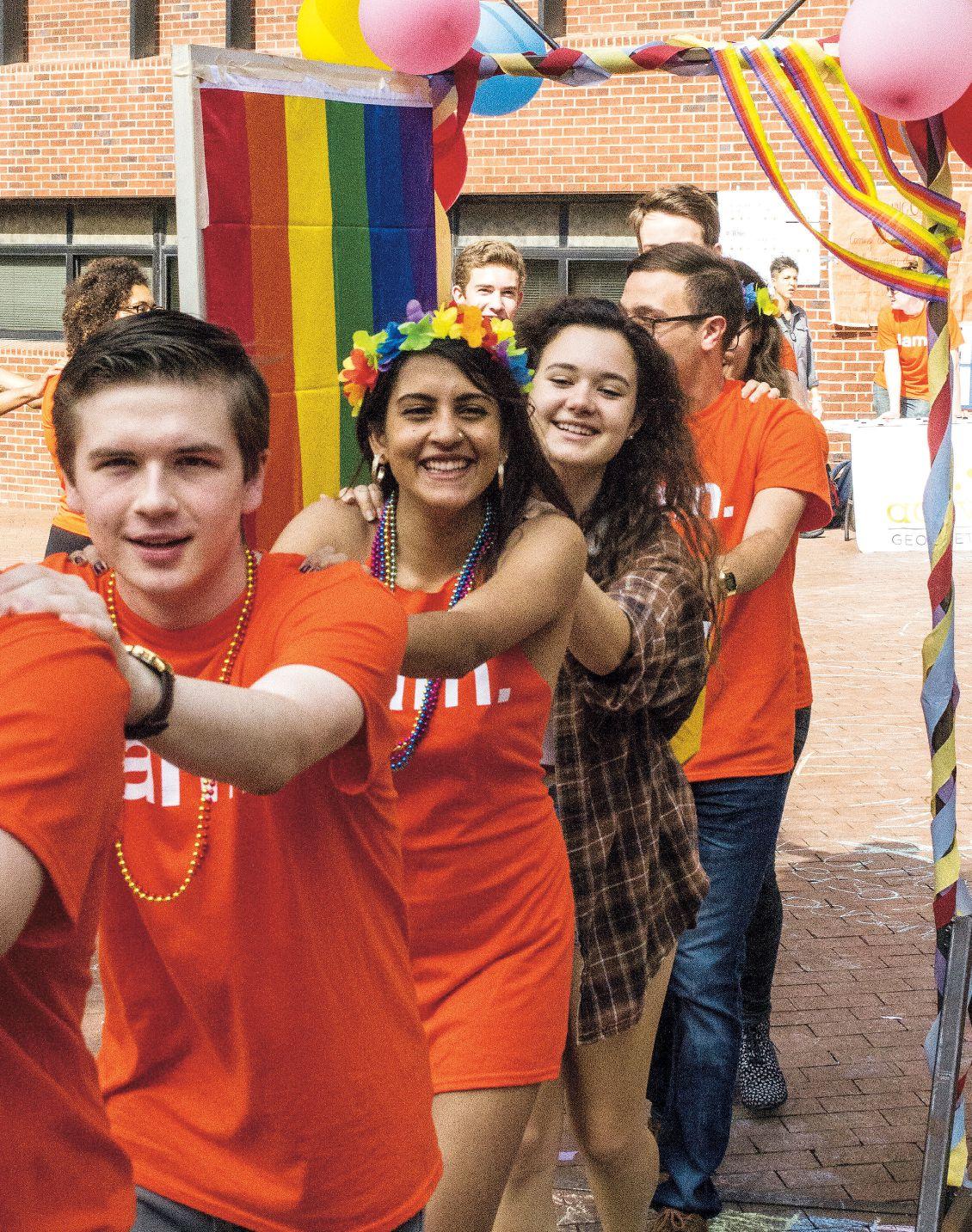
VISIT magazine.georgetown.edu 21
Photos: Georgetown University LGBTQ Resource Center and Georgetown University Special Collections
Allen Easterling (F’19), student assistant at the LGBTQ Resource Center, celebrates Coming Out Day by walking through a decorated doorway in Red Square surrounded by messages of acceptance.
10 YEARS AND A WORLD OF DIFFERENCE
A decade later, that window opens onto a thriving LGBTQ campus community. The center hosts student orientation activities, regular coffee hours and Queer Kitchen, a peer-mentorship program, a month-long LGBTQ history month in the fall called OUTober, Gatherings and Passages programming, and the Georgetown Summer Fellows Program in partnership with the Georgetown Scholarship Program.

Zackary Abu-Akeel (F’18) remembers feeling uneasy the first time a friend brought him to the center’s coffee hour in his sophomore year, his first year “out” at Georgetown. “Crossing that threshold made my identity more visible. I felt vulnerable giving up control of it. Thankfully, I found many new friends, Shiva, and my entryway into the active LGBTQ campus community on the other side.” Abu-Akeel subsequently worked with Subbaraman to research the Out for Change campaign, and helped co-host events between the center and Campus Ministry.
THE IMPACT OF ALLIES
The center found major allies early on in Paul (C’62) and Chan Tagliabue. In 2011, while Paul Tagliabue was chairman of the university’s board of directors, the couple donated $1 million dollars to create the Tagliabue Initiative for LGBTQ Life: Fostering Formation and Transformation. Their son, Drew, who is a gay man, helped inspire the Tagliabues to grow student services support for LGBTQ individuals as integral members of the Georgetown community.
“From my perspective the gift was about our own priorities. We wanted to make clear, given our family experience, that this was a priority for us within an academic institution,” says Paul Tagliabue.
Chan Tagliabue also hopes the gift will continue to help all students feel welcome on campus.
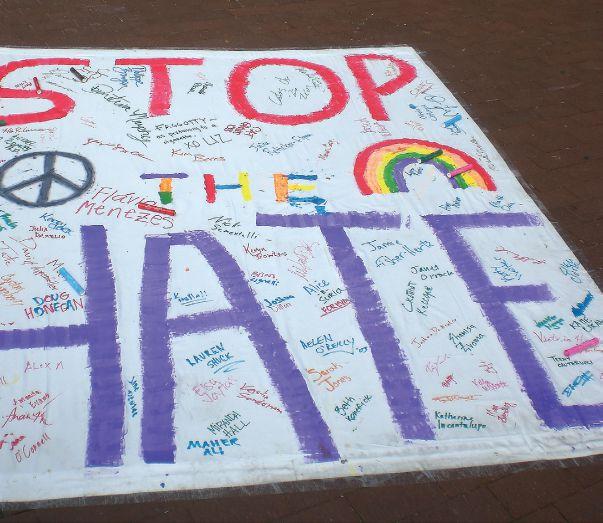
“If you leave out a whole segment of the student body, you’re denying the heart of your true values as a university,” she says.
The Tagliabue gift allows the center to invite nationally known speakers, sponsor symposia, fund faculty and graduate student research projects, support student conferences, and hold an annual retreat called Journeys. (See page 25 for more information.)
The center has also made its mark on the university’s signature events, sponsoring the annual Lavender Graduation—a special ceremony for LGBTQ students and allies that is part of Commencement festivities—as well as official events at Homecoming, John Carroll

22 GEORGETOWN MAGAZINE FALL 2018
The formation and development of the LGBTQ Resource Center has been driven by university commitment, protest, and pride.
Weekend, and Reunion Weekend. “We are in leadership everywhere,” Subbaraman says. “There is no part of the university that we have not touched.”
Julia Reticker-Flynn (F’08) recalls that at her Lavender Graduation in 2008, around eight students participated and three “amazingly supportive staff and faculty.” Attending Lavender Graduation just two years later, she found more than 150 students participating, along with hundreds of audience members, faculty and staff, and President John J. DeGioia. “While I was at Georgetown, I couldn't have imagined this many people publicly supporting the LGBTQ community,” she says.
Associate professor and English department chair Ricardo Ortiz, a member of the Out for Change campaign that students and faculty launched in 2007 to advocate for support of LGBTQ communities at Georgetown, says that these events send an enormous signal to the campus: this is who we are as an institution in totality. He sees changes large and small in campus culture, from the quality of classroom conversations, to how students self-identify and dress, to out-identified stickers on their laptops.
“It’s a qualitatively different experience than it used to be. There’s been a really profound cultural shift,” Ortiz says.
A LONG ROAD AND A TURNING POINT
That shift did not happen overnight.
Michael Bento (C’83), today a mentor for LGBTQ students and Georgetown Scholarship Program students, remembers Georgetown before LGBTQ student groups were recognized by the university.
“Coming out as an undergrad, first to myself and then more broadly, was terrifying and painful,” Bento says. “I put an enormous amount of psychic energy into hiding. We all did. I think a lot about what we could have done with that energy if we hadn’t squandered it on hiding.”
LGBTQ student groups did not have equal, official status. In 1980, the Gay Rights Coalition of Georgetown University Law Center filed suit against the university to seek that status. After nine years of legal action, including motions before the Supreme Court, Georgetown and the students settled, and LGBTQ groups achieved the right to officially organize. That legal win spurred a boom of student activism that eventually culminated in the opening of the LGBTQ Resource Center in 2008.
In 2001 and 2002, LGBTQ groups on campus expressed interest in stronger backing from the administration, recounts Todd Olson, vice president for student affairs.
“Even though there was a student group, there wasn’t a lot of visibility or support. It still wasn’t a very welcoming place for LGBTQ students on this campus,” Olson remembers.
In 2003, the university created a part-time LGBTQ resource coordinator-advisor and began considering the full-time support that students wanted. In fall 2007, an LGBTQ student was hospitalized after being attacked by a group of men outside the Healy Gates. A Georgetown student was arrested as a suspect in the assault. Activism proliferated across campus in response to the hate crime, and students and faculty organized the Out for Change campaign.
Only one year out of the closet, Reticker-Flynn was nervous to join campaign leadership on an issue so personal. However, she felt determined that Georgetown could be a place that not only provided a worldclass education, but also resources and compassion for LGBTQ students.
“The day before the first major protest, a small group of us gathered at one of our houses and stayed up all night writing out the campaign demands. We were angry, tired, but inspired that this might be an opportunity to create lasting change at Georgetown,” Reticker-Flynn says. They hoped that 100 people would sign a petition in support of the demands; within 15 hours they had over 900 signatures, she recalls.
“We were shocked and overjoyed. I remember feeling so inspired that there really was a ton of support for LGBTQ students at Georgetown.”
When a second LGBTQ student was pushed and verbally assaulted with homophobic slurs, and after weeks of subsequent student pressure, DeGioia convened a town hall to listen to student demands. Olson describes that town hall as “the point at which everything changed.”
Ortiz remembers standing on stage near DeGioia, hearing him publicly commit to creating an LGBTQ center as part of Georgetown’s Catholic and Jesuit mission.
“What he was initiating in that moment, he was doing as president of the university and a parent, but also as a Catholic,” Ortiz says. “When we invite students to come into this community, we do it in a way that should guarantee that they can live out their full realities as human beings. That’s fertile ground for a different kind of interaction between Catholic, Jesuit values and LGBTQ life. I have watched that blossom in the last decade.”
VISIT magazine.georgetown.edu 23
‘NOT DESPITE BUT BECAUSE OF GEORGETOWN’S JESUIT AND CATHOLIC HERITAGE’
Georgetown stands out as the first Catholic and Jesuit university to form and endow a university-resourced LGBTQ center.
Rev. Philip Boroughs, S.J., former vice president for mission and ministry and now president of the College of Holy Cross, and then-board member the late Rev. Howard Gray, S.J., were instrumental in early discussions on the need for the center.
“This was not despite but because of Georgetown’s Catholic and Jesuit heritage,” says Rev. Mark Bosco, S.J., current vice president for mission and ministry. “If we take seriously educating the whole person, they argued, then part of that education includes both understanding the needs of Georgetown’s LGBTQ students and finding acceptable ways to care for them.”
Boroughs and Gray convened conversations on how to incorporate Jesuit teachings into the center’s work, and the duty of Georgetown as a Catholic institution of higher education to provide pastoral care.
In her eulogy at Gray’s memorial Mass in May, Subbaraman paid tribute to his foundational role.
“Without his moral and spiritual imprimatur, the LBGTQ Resource Center could not have been imagined,” she told the audience. “Among his many gifts to us, his greatest for all those on the margins of faith communities, but especially for LGBTQ communities, was that he saw us. And in seeing us he returned us to our spiritual origins,” Subbaraman said.
“Georgetown’s advocacy is drawn from its mission and values that promote respect and human dignity for all our students. If we take respect, sensitivity, and compassion as part of our Catholic response to the world’s needs, then it means getting to know Georgetown’s LGBTQ community and their needs,” Bosco says. “At the same time, Georgetown’s Catholic heritage has been and always will be part of the pastoral and intellectual discussion of the university,” Bosco adds.
As Bosco adds, “It is not a zero-sum game to be both deeply Catholic and deeply sensitive to LGBTQ concerns.”
‘THESE ARE MY PEOPLE; THIS IS MY COMMUNITY’
Students report feeling that deep sensitivity in their lives on campus. One of the 2018 Lavender Graduation speakers, Zach Frial (F’18), who identifies as queer and transfeminine, says the evolution of their gender identity
can be marked by two events put on by the center. At their first Journeys retreat, before coming out as transgender, Frial was invited to reflect on their experiences.
“As I was up there, I realized that I wasn’t being entirely truthful,” Frial says, realizing a lot was still hidden. “I wasn’t open to anybody about my gender. I had basically tried to shut down that part of myself, and left it out of my reflection. Being able to share my real story at Lavender Graduation this year was a redeeming moment. This is my full actual truth now.”
Grace Smith (C’18) also spoke at this year’s Lavender Graduation.
“It was one of the first moments when I could look out in the room and say ‘Oh, these are my people; this is my community.’ It was absolutely a product of four years of having them support me and having me support them,” Smith says.
The center’s influence extends to prospective students as well. Allen Easterling (F’19) realized soon after accepting an admission offer to Georgetown University that he did not really know what life at a Catholic and Jesuit university would be like for a gay man. He googled LGBTQ student life and Georgetown’s mission and values. Right away, he found a welcoming Facebook group, information in the New Student Orientation packet, and the LGBTQ Resource Center. The community he saw provided a wave of relief, and three years later he gives a lot of credit to the center for his positive experience at Georgetown.
Center supporter John LeBedda (C’68) thinks the creation and growth of the center make Georgetown a more attractive destination for LGBTQ students.
“It demonstrates the Jesuit principle of cura personalis, care for the entire person, in action. I think that LGBTQ students are much more likely to apply for admission to Georgetown given its growing reputation as a safe and friendly place for the LGBTQ community,” LeBedda says.
CENTER REPRESENTS CHANGE TO LGBTQ ALUMNI
Alumnus Michael Bento is enormously proud of the center’s role in helping students find themselves.
“It’s a gift to everyone at Georgetown to prominently hold up a model of being fully yourself. I think for staff, faculty, and students, it’s a model of how to live authentically, whoever you are,” Bento asserts. “I can’t think of a more important time in life to have a model like that than during your college years.”
Mark Lance, professor of justice and peace, recalls that 15 years ago out and active LGBTQ students often came to him talking about transferring from Georgetown, but
24 GEORGETOWN MAGAZINE FALL 2018
today “the change is just profound. I think the center is an enormous part of that.”
The center brought Lorri L. Jean (L’82), chief plaintiff of the 1980 lawsuit and now CEO of the Los Angeles LGBT Center, to campus and hosted her as part of the 25th anniversary of the lawsuit. She was also invited to speak at the Georgetown Law Center for a half-day symposia. Jean said that while she’s “in the process of forgiveness,” seeing the change at Georgetown is “very gratifying.”
LeBedda reopened his relationship with the university. “It was through the unprecedented and courageous action of President John J. DeGioia, Vice President for Student Affairs Todd A. Olson, other members of the administration, faculty, and the heroic student body members that this was possible.”
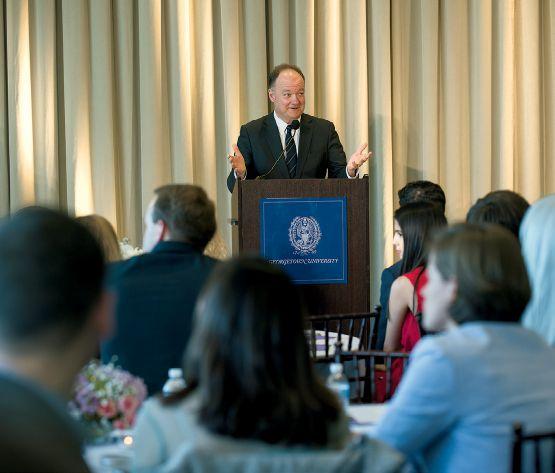
Reticker-Flynn adds, “When you see your identity celebrated by the university, you begin to feel like you too belong.”
For more information on the LGBTQ Resource Center, visit lgbtq. georgetown.edu. To read more about the history of LGBTQ activism at Georgetown, visit the blog “LGBTQ Histories at Georgetown” at lgbtq.georgetown.domains/history.
THE TAGLIABUE INITIATIVE
Surrounded by their children and grandchildren, Paul (C’62) and Chan Tagliabue were presented with a special award at the 2018 Lavender Graduation in gratitude for their ongoing support of the LGBTQ community at Georgetown—beginning with their transformational gift establishing the Tagliabue Initiative for LGBTQ Life: Fostering Formation and Transformation.

“When we made this gift 10 years ago, a number of members on the board of directors said this will be the most significant thing you’ll do in your lifetime at Georgetown. And they were right,” said Paul Tagliabue.
The initiative supports a wide array of activities, including:
• OUTober programming, including the annual Coming Out Day, in which students pass through a door in Red Square to “come out” as proud LGBTQ Hoyas and allies.
• Journeys: Understanding Self and Building Community, an annual LGBTQ Resource Center retreat at Georgetown’s Calcagnini Contemplative Center.
• T he Tagliabue Research Award in support of gender and sexuality research, most recently awarded to second-year master’s student Mahdi Zaidan for his examination of LGBTQ identity in the Middle East. Theology professor Julia Watts Belser was the inaugural recipient for her studies on LGBTQ disability justice activism.
• Lavender Graduation, featuring keynote speakers: D.C. Councilmember David Catania (F’90, L’94), Kara Swisher (F’84), Congressman David Cicilline (L’86), Melissa L. Bradley (B’89), Daniel Porterfield, Ph.D. (C’83, Parent’19, ’20), Susan Davis (F’78), The Honorable Mark Dybul (C’85, M’92, H’08), Dinaw Mengestu (C’00), Rev. Michael A. Zampelli, S.J. (C’82), and The Honorable Pamela K. Chen (L’86).
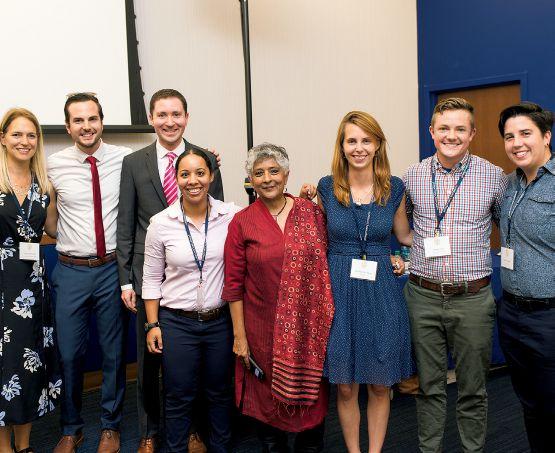
VISIT magazine.georgetown.edu 25
Director Shiva Subbaraman (in red) with student leaders, alumni, and university staff at the center’s 10th anniversary celebration in 2017.
Chan and Paul (C'62) Tagliabue announced The Tagliabue Endowment for LGBTQ Life at John Carroll Weekend in 2011.
President DeGioia addresses the university community at Lavender Graduation 2018.
COSMIC CONNECTION HEYDEN OBSERVATORY
When the university’s observatory opened in 1843, it looked out at farmland and brilliant night skies. Within it, astronomy department faculty gained international fame by tracking stars, measuring local longitude and latitude, and researching solar eclipses. The department closed in 1971, but the observatory, named for director Francis J. Heyden, S.J., remains an open window to the night sky. The student Astronomical Society hosts weekly stargazing, using the dome’s 1888 telescope, along with smaller, contemporary devices. Given urban light pollution, “you can still see a surprising number of astronomical objects,” says society president Laura Caron (F’20), including Jupiter, Mars, Saturn, Venus and Neptune.

26 GEORGETOWN MAGAZINE FALL 2018
Photo: Daderot





VISIT magazine.georgetown.edu 27
Photos: Georgetown University Special Collections
Clockwise from top left: Director Francis J. Heyden, S.J., with the 1888 telescope, still in use; 1914 sketch; original 1840s plans; early faculty eclipse expedition in Virginia Beach; bucolic beginnings.
Pursuing the Dream— the Legacy Continues
Georgetown Community Scholars Program Marks its 50th Anniversary

 by CHELSEA BURWELL (G’16)
by CHELSEA BURWELL (G’16)
IN THE HOURS FOLLOWING NEWS REPORTS of Rev. Dr. Martin Luther King Jr.’s assassination on April 4, 1968, a wave of rage swept through the Washington, D.C., neighborhoods of Capitol Hill, Anacostia, Shaw, and Columbia Heights—leading to four days of rioting in the nation’s capital. For the District’s Black community, losing King was more than just the death of an icon; it crushed hopes for progress against entrenched racial discrimination.
28 GEORGETOWN MAGAZINE FALL 2018
Photos: Lisa Helfert
Juan Moreno (F'19), Eriss Donaldson (C'19), Hash Singh (C'20), and Diego Tum-Monge (C'19), share insight about the GU student experience during the "Transitioning to College" summer program.
Syed Chapman, one of the 75 incoming Community Scholars, listens intently in the “Transition to College” session.
Though only a bus ride away, Georgetown was far removed from the violence and destruction. Nonetheless, the campus community became galvanized. As then-President Robert Henle, S.J., would later say, “No modern urban university can in conscience ignore the problems of the inner city and urbanization. Let’s divide up the work and get on with it.”
Opening Doors
Educational inequity in D.C. public schools and lack of access to higher education had been one of the flashpoints for the Black community’s frustrations. “The obvious response from Georgetown after the unrest was ‘We are an educational institution—can we open our doors to more students?’ ” recalls Charles Deacon (C’64, G’69), dean of undergraduate admissions, then early in his Georgetown admissions career.
With support from deans, faculty, and staff, Georgetown created the Community Scholars Program, which provided financial and academic support to local black students wanting to attend the university. The first six Community Scholars arrived at Georgetown in the fall of 1968.
“Each of the undergraduate deans dedicated a percentage of their scholarship funds to students from D.C.,” Deacon notes. “Faculty and staff were also encouraged to make contributions from their paychecks into the fund.”
Now celebrating its 50th anniversary, the program is the cornerstone of Georgetown’s commitment to access and affordability—transforming individual lives and the university itself.
“Beyond providing an academic-intensive experience that allowed students to succeed and excel, this program was also an early and direct response to racial injustice,” says Charlene Brown-McKenzie (C’95), director of the university’s Center for Multicultural Equity and Access and a former Community Scholar herself.
“Georgetown had to ask itself, ‘What is our responsibility to D.C.?’ It was justice in action.”
Gaining Credibility
For the initial group of Community Scholars, the transition to campus life on the Hilltop was not easy. At the time, Black students made up just 1 percent of total enrollment.
“It was a tremendous culture shock for me,” says Bruce Mason (C’72). “There were so few of us at the time that we naturally banded together.” The small Black student body launched the Black Student Alliance (BSA), which provided influential support for CSP and also raised scholarship funds for the program.
On July 6, the newest group of Community Scholars arrived on campus for the five-week summer session that begins their first year at Georgetown. The 75 students took two credit-bearing courses, lived on campus, and participated in many dinners, seminars, and programs designed to help them build a successful academic career. The students generously allowed Georgetown Magazine to attend many of the programs.
The summer program coursework is rigorous. The syllabus for the required Writing and Culture class includes classic texts and contemporary writers and essayists. Courses are taught by Georgetown faculty, with graduate student tutors. The word community is stressed intentionally. “In addition to the academic work, community building is part of every aspect of the five weeks and beyond,” says Devita Bishundat, the program director. “No matter the students’ experiences or the knowledge that they bring with them, they have a community of people who have similar lived experiences.”
“I really feel blessed to be here,” says Jennifer Martin Sanchez, a Scholar from Phoenix, Arizona, who is a first-generation college student and biology major in the College. “The very act of applying to college was a big deal in my family. I knew that Georgetown would be a big step up for me, but Community Scholars helped close the gap, academically and financially.”
VISIT magazine.georgetown.edu 29
Student activism from the BSA played a major role in the hiring of Roy Cogdell in 1970 as director of community student programs. The first Black person to hold a highlevel administrative position at Georgetown since President Patrick Healy, S.J., Cogdell developed a solid foundation for Community Scholars and worked with groups like the BSA to increase recruitment and retention of Black students, faculty, and staff.
“Any institution dedicated to the kind of excellence in education that we stand for at Georgetown must make certain that it doesn’t provide this education only for the few,” Cogdell wrote at the time. “This kind of opportunity has to be available to young people of all backgrounds who are creative, ambitious, and hard-working enough to go through what is necessary to make the best possible use of it.”
The arrival of John Thompson Jr. as Hoya basketball coach in 1972 also made a critical difference for recruitment, highlighting Black excellence at the university.
“Georgetown became an iconic school for Black students because of the exposure and Thompson’s outspokenness on big issues,” says Deacon. “The university gained a level of credibility with the Black community, which had begun with the Community Scholars Program.”
Hungry to Learn
From the start, the Community Scholars Program offered a summer academic program of college-level courses and tutoring for incoming students prior to their freshman year. But staff soon began to realize that more support was necessary. As Cogdell noted, non-classroom issues such as financial pressures could spill over into academic performance.
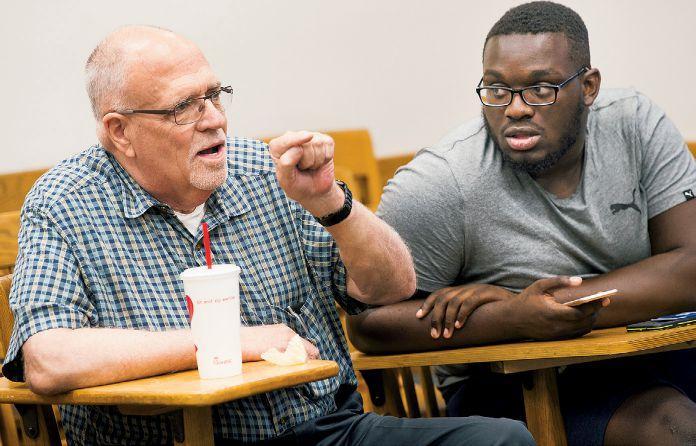
As the program approached its tenth year, two Georgetown administrators—Anne Sullivan from the College Dean’s office and Sam Harvey, director of the Center for Minority Student Affairs—reshaped CSP’s programming. By the mid-1980s, CSP provided continuous support for students throughout the fall semester of their freshman year.
Sullivan had joined the university staff after a brief stint as a high school English teacher in D.C. public schools, where she witnessed first-hand the difficulties students faced.
“When I was hired as a full-time teacher, my school was in complete chaos,” says Sullivan, who retired as senior associate dean in 2015. “When I came to Georgetown, I

30 GEORGETOWN MAGAZINE FALL 2018
Members of the newest Community Scholars Program cohort on Healy Lawn.
Father Raymond Kemp (left) leads a discussion with students during the Cura Personalis seminar (pictured at right).
Today, CSP provides comprehensive academic, financial, and social support for a cohort of about 75 incoming students each year.
remembered what those high-school classrooms were like and how hungry those students were to learn.”
Sullivan and Harvey successfully advocated for continued institutional support throughout the Scholars’ college careers. “Because we were just beginning to strengthen their skills, we couldn’t throw them into a sink-or-swim environment,” she says.
CSP has continued to evolve, adding more staff, instructors, and counselors, and expanding its reach to first-generation college students from underrepresented groups throughout the country. It is now housed within the Center for Multicultural Equity and Access (CMEA), the successor to the Center for Minority Student Affairs.

Today, the program provides comprehensive academic, financial, and social support for a cohort of about 75 incoming students each year. Students, mostly from under-resourced schools, are chosen based on their academic achievements, personal initiative, and service. In 2016, Georgetown established the Regents Science Scholars Program for incoming Community Scholars with an interest in the sciences.
Forming a Community
As it has from the beginning, the Community Scholars experience begins with a five-week summer academic program to aid the incoming students’ transition to university life. Students live
together in Copley during the summer term and participate in group activities designed to build supportive relationships.
Hashwinder Singh (C’20) remembers feeling an immediate connection with his fellow Scholars when he arrived on the Hilltop two summers ago. Growing up in a low-income household in Tacoma, Washington, he came to Georgetown with an interest in studying government as a way to address issues facing low-income people of color.
His summer session began the day after the shooting of Alton Sterling, an unarmed Black man, by Baton Rouge police—an event that sparked protests by Black Lives Matter and other civilrights groups. “In high school, I had always wanted a space to outlet my frustrations about these things, and I finally could talk about it with my classmates at Georgetown,” Singh says.
“It was an emotional and sobering moment, and I was humbled to be around so many amazing people from different walks of life. I built some of my closest friendships that day.”
Scholars also form lasting bonds with the faculty members who teach during the summer session. As CSP Academic Director Elizabeth Velez (G’83) explains, every student takes two classes: a writing course and a course assigned by the dean of the school they are entering.
“I developed a strong mentor-mentee relationship with Professor Velez,” says Donna Hernandez (F’13), now a Foreign Service
VISIT magazine.georgetown.edu 31
officer with the U.S. State Department. “She really took the time to read our essays and critique them in a way I’d never been critiqued before. It wasn’t just correcting the grammar, it was correcting the ideas—pushing you to be more of an analytical thinker.
“Being exposed to that type of mentorship, you realize that learning is not necessarily about getting a top score on your next exam; it’s understanding how you’re growing and developing as a student,” Hernandez adds.
Velez, who has been associated with the program for 38 years, says the students keep her coming back each year—in fact, she admits that she’s reluctant to retire. “These students are motivated. They have already taken advantage of what’s available in their communities. And for some, that wasn’t a lot. They are hungry to do intellectual work.”
“This is one of the most profound teaching experiences you can have,” she says.
Unique Pressures
While all Georgetown undergraduates feel pressure, Community Scholars often face issues not experienced by their fellow students.

“Many have responsibilities at home still,” says CSP Director Devita Bishundat. “They are taking care of their families long-distance. Many of them worked in high school, so their income was part of the family budget. Now it’s gone. Some students are still sending money back home.”
Bishundat connects students with academic, social, and health resources and staff within CMEA, such as psychologist Dr. John Wright, and across campus. “My role here is helping students with their Georgetown journey, and to walk that journey with them,” she says. “We’re engaged with the students,” adds Velez. “I don’t like to intrude on their lives, but we let them know we’re available. It’s also about trust—teacher-to-student and student-to-student. I don’t know how it happens, but they believe it and they live it out.”
Luis Gonzalez (C’19) came to Georgetown because of its Jesuit values—specifically, the university’s support of students’ well-being and focus on cura personalis. As an undocumented student, however, he was apprehensive. “For me, a big part of my experience is as an undocumented student, but I didn’t have to think about it too much because of the robust level of support from CMEA, the dean’s office, and the provost’s office,” Gonzalez says.
32 GEORGETOWN MAGAZINE FALL 2018
Community Scholars Program students showcase their talents during the "ART share" program.
After 50 years, the Community Scholars Program continues its mission of making a Georgetown education accessible for students from marginalized populations.
That kind of robust support was critical for Toddchelle Young (C’12), who almost left Georgetown shortly after she arrived from New Haven, Connecticut.

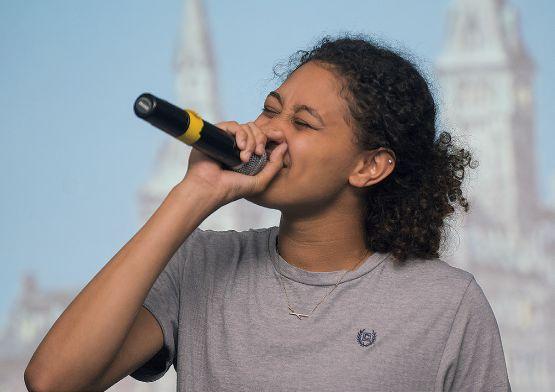
Fortunately, during her summer orientation, Young had grown close with members of her cohort and her resident director, Minnie Annan (C’05, G’06). “I remember when she came the very first day, and she was a ball of nerves,” Annan says. “Every night she would come to my room, just sit on the floor, and we’d talk. She really became like my little sister.”
Young worked closely with Community Scholars and CMEA staff throughout the summer. “They were literally my lifeline,” she says. She went on to become a resident assistant and then resident director, receiving the Landegger Award for Service in 2012. Following her graduation from Georgetown, Young earned a Master of Public Health in Sociomedical Sciences from the Columbia University Mailman School of Public Health.
“I’ve been given the opportunity to do so many things that I never would have imagined doing had I not been a Georgetown student and a Community Scholar,” says Young, now director of research at Georgetown’s Red House and the Hub for Equity & Innovation in Higher Education.
‘Thank You for Coming Here’
After 50 years, the Community Scholars Program continues its mission of making a Georgetown education accessible for students from marginalized populations. What began as a direct and immediate response to racial injustice and social unrest in D.C. has become a model for higher education. The program has a 92 percent graduation rate—far above the 59-percent national average and close to Georgetown’s overall rate of 94 percent.

“The students have fought through great adversity to be here,” says English faculty member Christopher Shinn. “It makes me appreciate what Georgetown offers our students and what immense creative talent and diversity CSP students bring to the Georgetown community.” Shinn says that teaching the CSP Writing and Culture course “is truly the highlight of my year.”
In her remarks at this year’s welcome dinner in July, Elizabeth Velez emphasized to the Scholars that they give as much or more to Georgetown as Georgetown gives to them. “You all had a lot of choices, and you could have gone a lot of different places. Knowing a little bit about who you are, I just want to say, ‘Thank you for coming here.’”
VISIT magazine.georgetown.edu 33
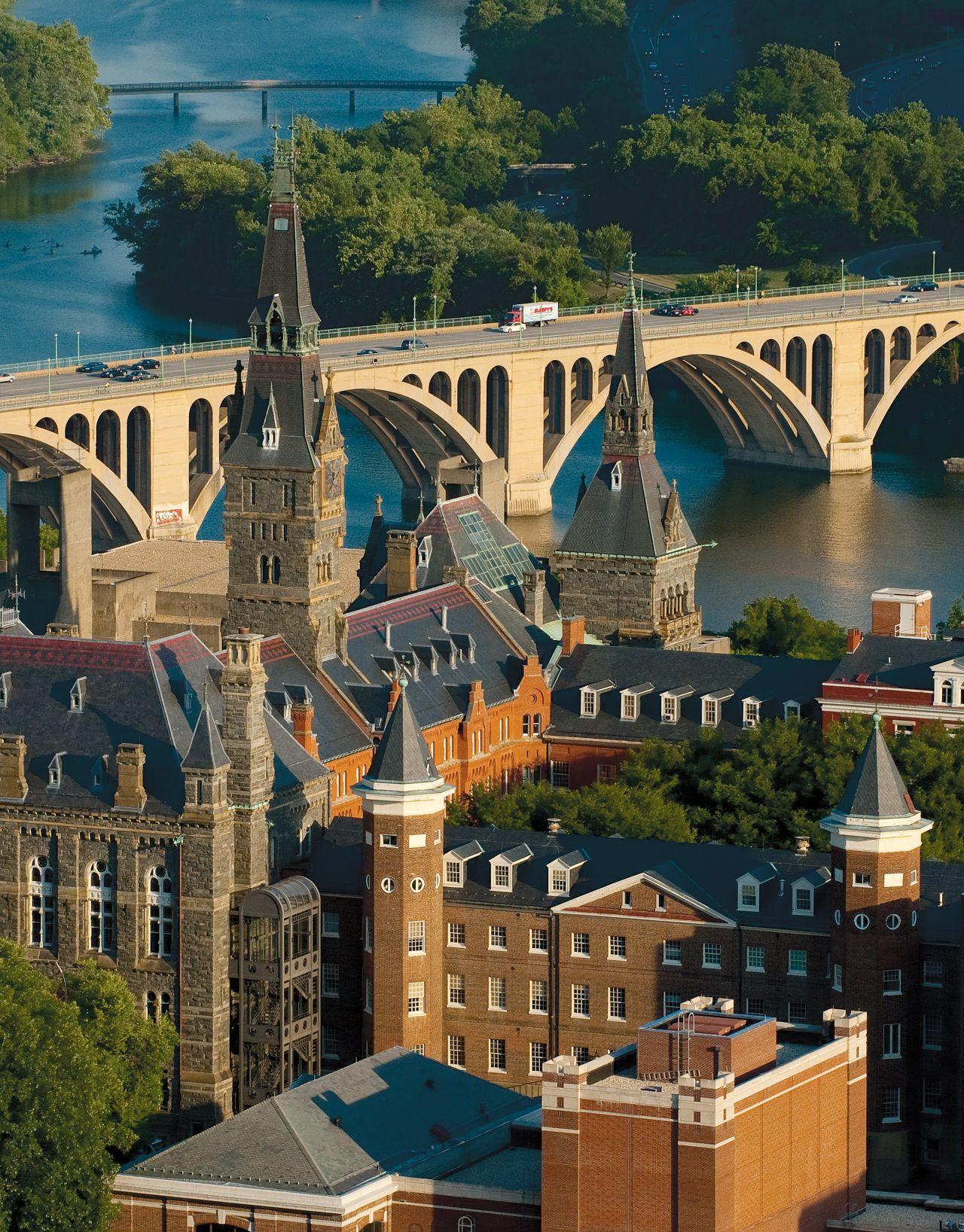
Dear Fellow Hoyas,

After serving on the Board of Governors since 2002, I am honored to begin my two-year term as president of the Georgetown University Alumni Association (GUAA). I am committed to advancing GUAA’s mission: to generate goodwill and support for the university, and to foster a lifelong connection among alumni, our alma mater, and the global Georgetown community.
You see, Georgetown changed my life.
My life is an exemplar of the American dream. My parents emigrated from Croatia and Slovakia; I am a first-generation American and the first person in my family to graduate from college. Georgetown molded me intellectually, spiritually, emotionally, and civically. I met the love of my life, my wife Debbie (F’71), at Georgetown—our first date was The Voice Christmas party.
Our two daughters, Sarah (MPP’09) and Christine (C’08, M’17), are also Hoyas and share our deep belief in “women and men for others” and cura personalis, as well as our passion for Hoya basketball!
My first official responsibility as GUAA President was leading the biennial Board of Governors retreat, where we reviewed and affirmed the GUAA 2020 Strategic Plan. The Board has determined five key strategic priorities:
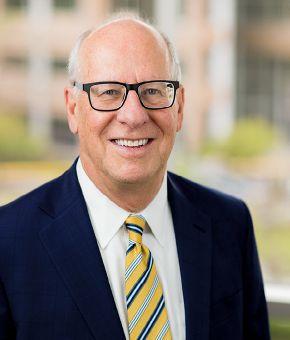
Diversity—Align GUAA programs, resources, volunteer leaders, and recognition to reflect the diversity of the alumni population and create a more inclusive community. Strengthening Engagement—Strengthen Georgetown’s global brand, mission, and goals by engaging alumni in meaningful activities and programs.
Communications—Enhance GUAA communications with alumni and the university.
Metrics—Create a culture of measurement and accountability. Governance—Maintain efficient and sustainable governance.
My particular focus will be on promoting diversity, and inclusion in all of our programming, events, and services.
I look forward to working with the Board of Governors to promote these goals along with Paul Lanzone (MBA’15), the newly appointed associate vice president of Alumni Engagement, and Julia Farr (C’88), the new executive director of the alumni association. (Read more on page 36.)
In order to succeed, we must have a vision, a mission, and a plan to get there. That’s what I told my daughter when we decided to climb Kilimanjaro. After lots of planning and training, we reached the summit. As your alumni association president, I make it my mission to amplify the Georgetown values we all hold dear and bring you home to Georgetown.
VISIT magazine.georgetown.edu 35
Hoya Saxa,
“In order to succeed, we must have a vision, a mission, and a plan to get there.”
Richard M. Hluchan (F’71) President, Georgetown University Alumni Association
Georgetown Announces New Senior Alumni Leaders
Paul Lanzone (MBA’15) has been appointed associate vice president of alumni engagement and Julia Farr (C’88) has been named executive director of the Georgetown University Alumni Association.

Lanzone and Farr are both familiar with the Georgetown alumni community. Lanzone worked at Georgetown from 2010 to 2016, rising to assistant vice president of class programs and reunion campaigns. Farr, a third-generation Hoya—and Hoya Mom—served on the alumni association Board of Governors and as president of the association from 2010 to 2012.
Farr and Lanzone gave us a quick interview. Read the official announcement at https://alumni.georgetown.edu/news.
How has your Georgetown experience inspired your life journey?
As a third-generation Hoya with two daughters, Joyce and Cecilia, now in the College, I have always felt the magnetic pull of the Ignatian invitation to participation and service in the Georgetown community. From my undergraduate years through my years of board service with the alumni association, I have formed treasured multigenerational friendships that have made this experience so much richer. Hoya ties run deep, keeping us closely tethered.
What are your year-one goals?
To build and innovate. I look forward to creating new points of connection with alumni and reimagining our current successes—all with the ultimate goal of inspiring alumni to reconnect with Georgetown. The most recent pan-alumnae Women’s Forum is just one example of unique programming I will continue to incubate and grow—celebrating Hoyas, their impact on the world, and Georgetown’s part in that story.
What do you like to do in your spare time?
When not field-side at my son Peter’s football and rugby games, I practice yoga, paint landscapes, hike with my fiancé on the C&O canal, and whenever possible, spend time with my family at our summer home in Rehoboth Beach.
What five things must you have in your bag?
My eyeglasses, phone, iPad, legal pad, and lipstick.
Why return to Georgetown?
I’m a mission-driven person. This community has changed my life. The passion, the intellect, the shared values. I am grateful to apply my professional experience and strengths every day in service to an institution and community that has profoundly impacted my life, and the lives of so many others.
What are your year-one goals?
My top priority is to help develop a university-wide alumni engagement strategy with a commitment to being more inclusive in our outreach and programs. I also hope to strengthen partnerships with our alumni, faculty, and staff, and help students transition into alumni.
What do you like to do in your spare time?
Explore new places and cuisines with my husband Michael. Spend quality time with our dog and cat. I try to do the New York Times crossword puzzle every day on my phone—great for travel. Spend time with family in San Luis Obispo, California.
What five things are always in your bag?
Two Macs (work and personal); endless supply of cords; multi-colored pens and paper to organize thoughts; passport; iPhone filled with music and Podcasts.
—Interviews by Lucy Garry Flinn (C’86)
36 GEORGETOWN MAGAZINE FALL 2018
Julia Farr (C’88)
Paul Lanzone (MBA’15)
Comedian Jim Gaffigan Stands Up for Scholarships
The first thing to know about comedian Jim Gaffigan (B’88) is that he’s hilarious but still down-to-earth. He has several shows available on your streaming devices so you can see how he spins the aging process, insecurity, and his five children into comic gold.
Another important thing to know about Jim Gaffigan is that he cares about the cost of higher education. (Maybe he’s thinking about his five children.)
Gaffigan proved his commitment to access and affordability by taking time during his new Fixer Upper comedy tour to share a night of comedy at a sold-out September 20 show at the Mayne Theater in Chicago as a fundraiser for the Georgetown Scholarship Program (GSP). All proceeds from the event, which drew 300 Georgetown alumni and friends, raised almost $25,000 for GSP.
“Most of us are here tonight because we love Georgetown,” Gaffigan said during the show. “And we’re here to support the Georgetown Scholarship Program”
Jim Gaffigan was introduced his older brother Joe (B’87). They are a second-generation Hoya family, following the path of their father, Mike (F’57), a first-generation college student.
“Jim and I both value our Georgetown education,” says Joe Gaffigan. “Jim enjoys learning still. Georgetown set him up for that.”
Founded in 2004, GSP has served more than 1,600 students, most of whom are first-generation college students, by providing to access to resources and support networks.
The evening of stand-up was “a different way of giving back,” says Michelle Schara Mauboussin (B’86), chair of the GSP advisory board—and also a big Gaffigan fan. “The event not only was successful financially but also in raising visibility for GSP.”

The evening was produced by Michigan Avenue Magazine and presented by Wintrust Financial and Celebrity Cruises. It included a meet and greet with the comedian.
Mauboussin also credits Emily Chen Carrera (B’88) and Jim Gaffigan’s wife and writing partner, Jeannie, for organizing the event.
“The generous support given tonight will help provide students access to resources and a community focused on their success,” says Charlie Deacon, Georgetown’s dean of admission and GSP co-founder “We are thankful to everyone in attendance, particularly Jim Gaffigan, who brought us together for a great cause and a night of comedy.”
VISIT magazine.georgetown.edu 37
Photo: Icon Photo & Video
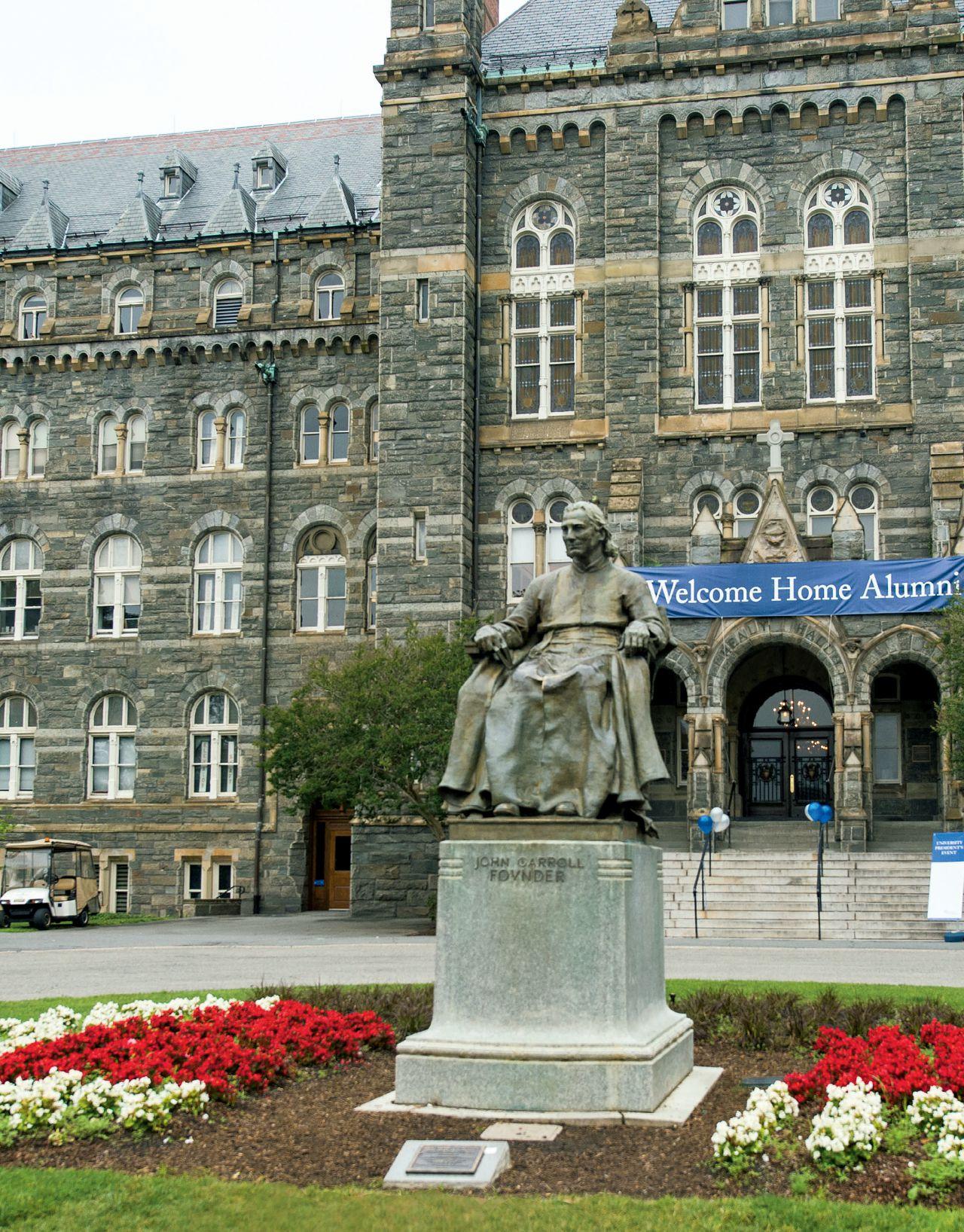
Main Campus Reunion 2018
More than 4,500 alumni and family members returned to the Hilltop for Reunion 2018. Nearly 100 events included alumni from reunion classes sharing their expertise on timely topics from counterterrorism, social impact and philanthropy, to the entertainment industry, plus a return to the signature Problem of God course. A reunion highlight was the Welcome Home Luncheon featuring Jennifer Fonstad (F’88), who shared insights from her career as an entrepreneur and investor. Georgetown President
John J. DeGioia provided a campus update.
Most important, Reunion’s heart is celebrating decades-old friendships and making new friend's on your Hilltop home.
Does your class year end in a “4” or “9”? Save the date for Reunion 2019, May 31-June 2! Keep informed at reunion.georgetown.edu.


John Carroll Weekend Seattle

Seattle’s legendary drizzle didn’t dampen the enthusiasm of the more than 1,000 members of the Georgetown family who attended April’s John Carroll Weekend. The fourday event featured more than 35 cultural events, including faculty-guided tours and panel discussions on timely topics. Stand-out events included tours of the Future of Flight Aviation Center and Boeing, tastings at Starbucks Roastery, alumni-led tours of Amazon headquarters, and a welcome reception at the Chihuly Garden and Glass (photo, left). The weekend’s cornerstone awards banquet recognized the distinguished service of five alumni and one university friend.
Go to jcw.georgetown.edu for details on next year’s John Carroll Weekend Boston, May 2 to 5, 2019.

VISIT magazine.georgetown.edu 39
Photos: Phil Humnicky
A FAST TRACK TO GLOBAL CITIZENSHIP
One day during her junior year, Donna Hernandez (F’13) was running an errand that took her past the busy Foggy Bottom Metrorail stop. As crowds rushed by, she checked her email and stopped cold.
The message said she had been accepted into the prestigious Thomas R. Pickering Fellowship Program, awarded annually to only 20 undergraduates nationwide. The fellowship prepares students for a career in the Foreign Service.
“I couldn’t believe that I was able to earn this opportunity—it completely changed my life,” she says. “In my mind, I’m just this little girl from Los Angeles who was in ESL classes in elementary school, and now I’m standing in the nation’s capital being offered a job contract in one of the most selective professions that there is right now.” Through the Pickering Program, Hernandez earned her M.A. at Yale and learned the diplomatic ropes through internships with the U.S. State Department, including a posting in Phnom Penh, Cambodia.
Hernandez, now a vice consul at the U.S. Embassy in the Philippines, views her arrival at Georgetown as the pivotal point that made her career possible.

Both a first-generation American and first-generation college student, Hernandez grew up in Los Angeles, the daughter of a Mexican father and Salvadoran mother.
“For me, international relations is in my household,” she says with a laugh.
Hernandez, a member of Georgetown’s Community Scholars Program, originally intended to return to California after graduation to work in local politics. “But the longer you’re in D.C., the bigger your scope gets,” she says. “That’s a benefit of moving away from home—understanding your place in the world and what you can do as a global citizen.”
She was also exposed to international issues through the experience of her husband, Eduardo Panyagua. High school sweethearts, the couple eloped right before Panyagua, a U.S. Marine, was deployed to Afghanistan—just two weeks after Hernandez had begun her freshman fall semester. Panyagua returned home from his deployment with both physical and emotional scars.
“We were in classrooms in the School of Foreign Service discussing policy issues about the war, but we weren’t really talking about the impact it was having on our generation,” Hernandez says. Selected as a Patrick Healy Fellow, Hernandez organized a campaign on campus to bridge the military-civilian divide.
Hernandez credits her success to the many mentors she had along the way—including SFS professor Cynthia Schneider, who encouraged her to apply for the Pickering Fellowship. “It’s all about finding people who see something in you that you might not see in yourself, and who push you in directions that you never thought were possible.”
Read more at magazine.georgetown.edu.
40 GEORGETOWN MAGAZINE FALL 2018
Photo: U.S. Embassy in Manila Public Affairs Section
LEARNING TO CONNECT—AND PAYING IT FORWARD
Philadelphia native Stephen Baldi (B’98) first set his sights on Georgetown in the eighth grade as an avid fan of Hoya basketball and scrappy point guard Joey Brown (C’94) in particular.
“But if you looked at the facts of my life, the neighborhood I grew up in, the things I had access to, there was nothing that said, ‘This kid’s gonna end up at Georgetown,’ ” Baldi says.
Enough people believed in his potential, however, and Baldi realized his dream of becoming a Hoya. Now president of Baldi Management Group, which owns and operates food concessions such as Dunkin’ Donuts at major airports, he’s mentoring young people as he was once mentored. “If I hire you to pour coffee in one of our stores and you’re still pouring coffee in three years, we haven’t done our job,” he says.

Baldi named his company in tribute to his parents. “I put in a lot of hard work, but none of it would have been possible if my mom and dad didn’t make sacrifices.”
As Baldi explains, when he reached high-school age, his parents made the decision to send him to Friends’ Central, a private Quaker school. There track coach Tim Beach—a friend to this day—took Baldi under his wing. As a way of giving back, Baldi now serves as a volunteer coach at the Bullis School in Potomac, Maryland, where his son Langston and daughter Elizabeth attended.
In Baldi’s senior year, a Friends alumna who’d gone on to Georgetown, Frances Lord (C’96, G’97), recommended Baldi to Hoya track coaches Frank Gagliano and Ray Humphrey. “And had she not done that, they would’ve never found me,” he says.
Baldi, who came to Georgetown as a Community Scholar, says that the relationships he formed there were lifechanging. Baldi also became close with then-President Leo J. O’Donovan, S.J. (C’56). “As a resident director, I was the person who picked him up from the Jesuit Community and walked him over to Harbin Hall. And in that walk we just started engaging and talking about life.
“I felt really blessed to be able to develop a friendship with him,” Baldi says. “He’s an exceptional human being.” For Baldi, learning to connect with other people proved to be the greatest asset he acquired as a Hoya. “I came out of Georgetown a very different person than I came in. I had an ability talk to people who had no other commonalities with my life or upbringing,” he says.
“If I find myself in the company of someone with good energy, I seek to find a connection.”
Read more at magazine.georgetown.edu.
VISIT magazine.georgetown.edu 41
Photo: Lisa Helfert
Hoyas Give Baxa Puts Service Ideals To Work
It’s April 28, one of the first spring-like Saturday mornings in New York City this year. Riverside Park, a four-mile-long strip of green that hugs the Hudson River on Manhattan’s Upper West Side, is bursting with runners, bikers, and strollers.
Alongside the trail, more than 20 people are digging out an irrigation line from its winter hibernation and bagging trash. Each sports a blue t-shirt emblazoned with “Hoyas Give Baxa.”
The day marked the Alumni Association’s seventh annual Hoyas Give Baxa—a day for Georgetown regional clubs across the world to take on community service projects. From Houston to Hong Kong, Austin to Boston, San Diego to San Juan, Puerto Rico, 23 clubs organized 25 service events. In all, more than 235 Georgetown alumni and family members participated.
The New York Club mustered not only the park cleanup crew but also volunteers to help at a soup kitchen.
“The clubs support events that are specific to their community’s needs,” says Sam Sanders (C’07, G’13), director of regional engagement, noting the Club of Puerto Rico’s Hurricane Maria relief service project.
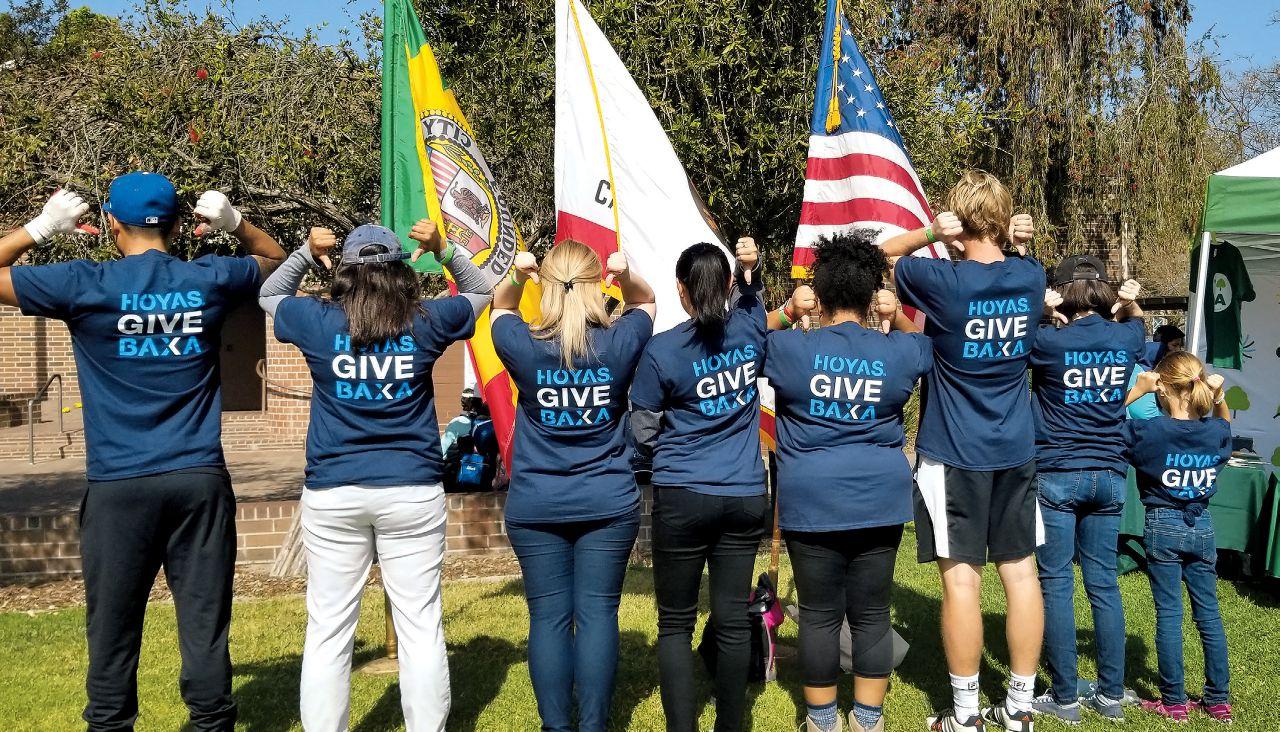
Sanders joined the Club of Detroit’s 13 volunteers as they helped with construction and landscaping at one of Detroit’s Tiny Homes, the Motor City’s project to provide a pathway to home ownership for some of its poorest residents. Hoya volunteers got shout-outs from passersby (as well as some unsolicited basketball advice for Coach Ewing).
At only a year old, this was one of the Detroit Club’s first projects. “To have 13 volunteers is impressive,” Sanders says.
Like Detroit, the New York park cleanup attracted alumni from several decades. “It’s great to have a multigenerational event—some alumni brought their families,” says Carolina Caballero (C’13) who, as club service chair, organizes monthly service opportunities. “People really clicked. There was lots of chatting,” she adds.
The blue Hoyas Give Baxa t-shirts attracted many people to ask about the activity and to say thank you, Caballero reports. “Even a Villanova alum,” she adds.
Twenty-three Georgetown clubs participated in April’s Hoyas Give Baxa service events: Atlanta, Austin, Boston, Chicago, Dallas/Fort Worth, Denver, Detroit, Fairfield County, (Conn.), Fort Lauderdale, Hong Kong, Honolulu, Houston, Los Angeles, New York, Phoenix, Portland, Oregon, Puerto Rico, Research Triangle, (N.C.), San Diego, San Francisco, Seattle, Tampa Bay, Washington, D.C.
42 GEORGETOWN MAGAZINE FALL 2018
Club of Los Angeles: Tree planting, Arbor Day 2018 Celebration
Photo: Gabrielle Lambert



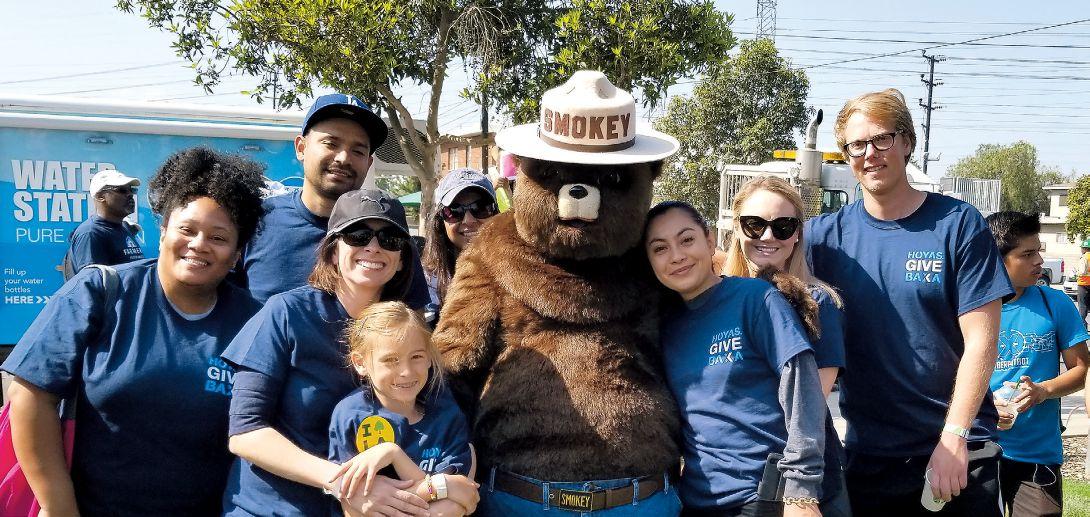
VISIT magazine.georgetown.edu 43
Photo: Mike Falco
Photo: Mike Falco
Photo: Tiffany Davis
Photo: Tiffany Davis
Photo: Gabrielle Lambert
Photos, clockwise from top: Club of Los Angeles: tree planting, Arbor Day 2018 celebration; Club of Metro New York: Riverside Park clean up (two images); Club of Atlanta: assembled personal hygiene kits for homeless teens outreach.
FORTY YEARS OF FIGHTING FOR THE UNDERDOG
When Douglass Seidman (F’72) was thinking about college, he considered four vocations. One was archeology—he was already spending weekends laboriously translating Egyptian hieroglyphics at New York’s Metropolitan Museum of Art. He also thought of being a teacher, like his parents. And with his love of travel and learning different languages, the Foreign Service seemed like a good idea. His mother also suggested a career in law.
Seidman read about Georgetown’s School of Foreign Service and decided to apply. “The Jesuit ideal of service to others resonated with me,” he says.
But he was eager to “get out in the world and do something” and ended up finishing Georgetown in three years. Borrowing money to take the LSATs from his thengirlfriend, Karen Reposi (SLL’74)—now his wife of more than 40 years—Seidman then entered Antioch School of Law in D.C., well known for its pioneering publicinterest law program.
He had learned about legal-aid careers from a brochure he found in Lauinger Library. “You get to fight for the underdog. I said, ‘That’s me. That’s what I want to do.’”
In his early legal work in New York City, Seidman developed expertise in helping poor and disenfranchised people get benefits they deserved, from Medicaid to honorable military discharges.
In 1985, Seidman became head of the Legal Aid Society’s Manhattan office in Chelsea. Chelsea was the heart of New York’s gay community and, at the time of Seidman’s arrival, was ravaged by AIDS.
AIDS also exacerbated housing issues. Seidman’s Legal Aid team raised a defense in housing court that said a surviving same-sex partner had the right to succeed as tenant. Similar cases made their way through the legal system. In a 1989 case, which Seidman and the Legal Aid Society joined as an amicus curiae , New York State’s highest court ruled in the survivors’ favor—leading to permanent regulatory reform.

“Our little office wound up changing the law in the New York and giving protections to a whole bunch of people way before gay marriage was possible.”
Seidman then moved to Legal Aid’s Harlem office, where he created a successful pilot program to set up the housing team’s offices inside the housing court. “We were the first courthouse housing office in the city,” he says. “That was 24 years ago, and now they are in every borough.”
While Seidman’s career may have lacked the glamour of exotic travel or Indiana Jones–like feats, becoming a lawyer proved to be the perfect vocation. “For the last 23 years of my career, I worked in a cubicle with no windows,” he says. “But it was wonderful.”
Read more at magazine.georgetown.edu.
44 GEORGETOWN MAGAZINE FALL 2018
Photo: Mike Falco
ACHIEVING DREAMS IN GLOBAL HEALTH
Asked what advice she’d give a Georgetown undergraduate student, Pamela Hoyt-Hudson (NHS’86) says, “Define your dream. Know where you want to go. Never give up.”
She knows that Georgetown helped her achieve the dreams she had when she entered the university, “even if it would take me almost 20 years to fully realize them,” she says.
Hoyt-Hudson knew she wanted to work globally. “I was reading about people who had made a big impact in the world,” she says. “I knew Georgetown could help me get there.”
Hoyt-Hudson was especially drawn to community health and the mentorship of Professor Jan Donahue. Community health wasn’t about imposing a plan or strategy, Hoyt-Hudson found. It was about partnering with the community.
In the first 15 years after graduation, Hoyt-Hudson worked domestically and globally. She was the only nurse on a year-long, volunteer Jesuit mission to Peru. After a year in pediatric critical care in New York, she treated homeless patients through a mobile van, then started a program for chemically addicted women and children. They were fulfilling roles but offered only short-term solutions.
She tried home-care biotechnology sales, “but I woke up in 2000 and said, ‘Wow—this isn’t my dream. How do I get back to the dream?’”
A chance encounter—a stranger overheard Hoyt-Hudson
talking about her dream job during a fitness class—led to the real thing: global nursing director for the Rogosin Institute’s Dreyfus Health Foundation in New York.
The work is based on a five-step methodology, “Problem Solving for Better Health®,” developed in 1989 by Dr. Barry H. Smith, which builds from a community-based approach. In 2016, the Institute launched the Center for Health Action and Policy to create new care models for chronic-disease prevention, early detection, and better care management, with Hoyt-Hudson as director. The Center has developed more than 45,000 locally led health projects in more than 32 countries.
In addition to the global program, Hoyt-Hudson and team are working in two Brooklyn neighborhoods where the life expectancy is 10 years less than the NYC average. It’s an ambitious community-based quest to reach one million residents—half of Brooklyn’s population—with health information about kidney disease by 2020 and to screen 75,000 for chronic kidney disease.
Through her work, Hoyt-Hudson connected or reconnected with a web of Georgetown alumni who have become advisors and partners.

“We can accelerate progress towards a healthier world,” she says. As for the dreams that led her to Georgetown? “The dream keeps unfolding.”
Read more at magazine.georgetown.edu.
VISIT magazine.georgetown.edu 45
Photo: Mike Falco
Rosemary Kilkenny (L’87): Challenged to Do Even More
Rosemary Kilkenny (L’87), Georgetown’s vice president for Diversity, Equity, and Affirmative Action, was honored with Georgetown’s inaugural Dr. Carol J. Lancaster Award this spring.
The Lancaster Award, created in memory of former School of Foreign Service Dean Carol Lancaster (F’64), celebrates women in the university community whose leadership has helped shape Georgetown.
A beloved professor and mentor, Lancaster worked in the U.S. Department of State before joining the faculty at Georgetown in 1981, and also served as deputy administrator for USAID from 1993 to 1996. She was the first woman and first SFS graduate to serve as dean, from 2010 to 2014.
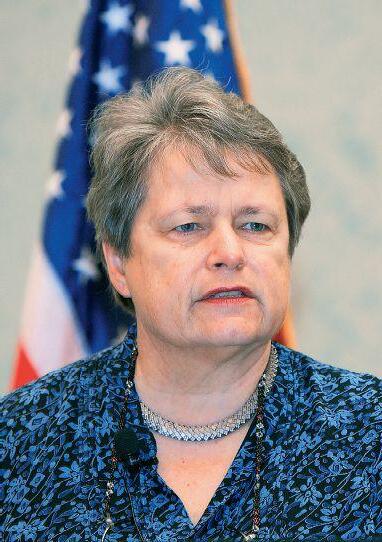
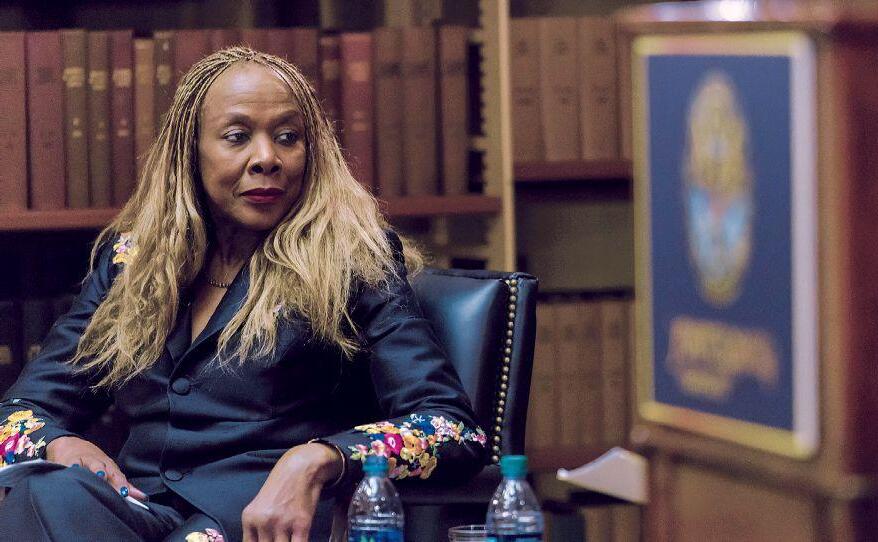
You knew Carol Lancaster personally. What does this award mean to you?
Carol was a force of nature. We were friends for more than 30 years, had children at the same time, and eventually saw them graduate from Georgetown. Before becoming dean, Carol’s academic interest was African Studies, but she was interested in and passionate about increasing opportunities for all people. She was cheerleader and mentor to many of us. I am incredibly honored, but I see it as a challenge for me to do even more.
When President DeGioia created your position in 2006, he said he wanted Georgetown to be a model for achieving inclusivity and diversity in higher education. What achievements stand out for you during your tenure?
One of the things I am proudest of is the establishment of our LGBTQ Resource Center. President DeGioia asked me to co-chair a working group with [former senior vice president for strategic development] Dan Porterfield (C’83) to develop
recommendations to help ensure the well-being and safety of our LGBTQ students, and one of them was establishing the center. It has served our students well now for a decade.
What other kinds of progress have you witnessed?
We have seen huge leaps in admissions. Women make up more than 50 percent of the undergraduate classes, and many are going on to graduate school. Women account for more than half of enrollment at both the Medical School and the Law Center. We have also worked to increase minorities and women in senior faculty and staff positions, and substantial progress has been made there as well. We have also witnessed the establishment and growth of the Georgetown Women’s Alliance, which brings together women from across the university for a variety of engagements to enhance their academic and professional opportunities.
There is a single sentence posted anonymously on Dean Lancaster’s memorial site: “People like Carol Lancaster never die.” Your work lends tangibility to that sentiment.
We’ve made inroads, but there is a lot of work to be done, both globally and here on campus. We need more women and minority persons in senior leadership positions in higher education. We need more women and minority persons on corporate boards and as CEOs. And we need to have women and men achieve equal pay for equal work.
I think Carol would be pleased, but also a bit impatient at the rate of progress. I think she would say, “Come on, we need to get this train moving faster.”
46 GEORGETOWN MAGAZINE FALL 2018
Photo: (L) Rafael Suanes (R) Georgetown University School of Foreign Service Communications
Rosemary Kilkenny (L’87) was honored with an award named for her friend SFS Dean Carol Lancaster (F’64).
Hoya Gateway Works to Strengthen Veterans Resources
Gen. George W. Casey Jr. (F’70) recalls that when he joined the university’s Board of Directors in 2014, Georgetown President John J. DeGioia asked him to focus on what the university is doing—and could be doing—for veterans on campus.
Casey, a retired four-star general, served as the 36th Chief of Staff of the U.S. Army from 2007 to 2011, and Commanding General of Multi-National Forces in Iraq from 2004 to 2007. The board subcommittee he chairs is looking at everything, from the research about veterans taking place across the university’s three campuses, to services for the 1,200 students who are active military, military-connected, and veterans. “Georgetown is doing a lot of good things,” Casey says. “We could make ourselves an institution-of-choice for military veterans.”
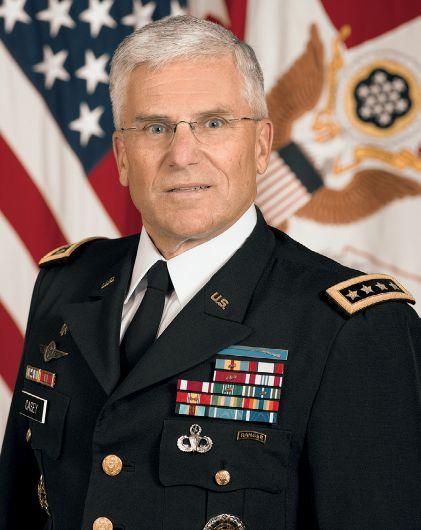
Hoya Gateway, the alumni association’s online networking platform, plays a role as well. The platform, which connects current students with selected alumni for one-on-one career conversations, added an additional service and alumni-to-alumni platform in April: the Georgetown Military Network powered by Hoya Gateway. It quickly became the fastest-growing alumni group within the platform, adding more than 230 members by summer.
Built for career exploration, Hoya Gateway is an ideal space to connect active and veteran alumni with each other and the broader alumni community. “There’s a highly specialized nature among the military alumni group, with a focus on professional
networking and transitions,” says Jeff Chapski (B’91), former president of the Georgetown University Alumni Association. “Hoya Gateway is an ideal match of functionality and those specific needs and goals.”
“Jeff really saw the opportunity there,” Casey says. “I was happy to give the first webinar and talk about my own career transitions.”
Georgetown Military Network member Joseph G. Canepa (G’85) enlisted in the Army Reserves after getting his graduate degree in Latin American Studies at Georgetown. A reservist for more than 20 years, a combat veteran and a retired major, Canepa is a now an attorney in New York. “People have a lot of questions about the transition to civilian life,” he shares. “It’s very worthwhile that there’s a network because these transitions aren’t always easy.”
LeNaya Hezel, director of Georgetown’s Veterans Office, agrees that networking opportunities are in high demand. “Through the Georgetown Military Network on Hoya Gateway, students who are pivoting their careers will be able to connect with alumni for mentoring or conversations about transitions and preparedness,” Hezel says.
To join the Georgetown Military Network, go to https://hoyagateway.georgetown.edu/hub/hoya-gateway/group/georgetownmilitary-network/about.
VISIT magazine.georgetown.edu 47
VISIT magazine.georgetown.edu 41
Photo: Monica King, U.S. Army
Highlighting Hoyapreneurs

The Georgetown Entrepreneurship Alliance (GEA) and the Alumni Association sponsored the second annual Alumni Pitch Competition this spring, a “Shark-Tank”–style event held during John Carroll Weekend in Seattle.
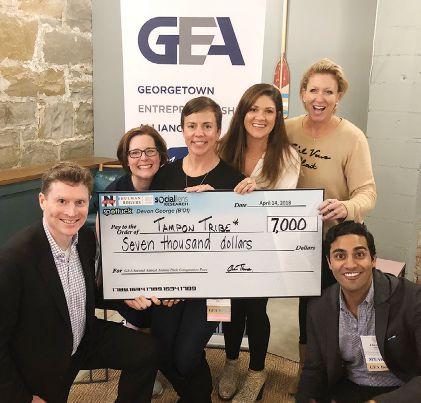
During the competition, four finalists—selected from 42 entrants—had the opportunity to present their business ideas to a panel of expert judges and a live audience.
“The alumni in the pitch all handled the questions with grace under pressure,” says Monica Ferguson (B’00), co-founder and COO of Solemates, who served as a judge.
The 2018 finalists included Ada Vaughan (MBA’06), CEO of Chore Check LLC; Sarabeth Boak (C’11), co-founder of Stitchbridge Inc.; Giana Korth (B’10), founding member of Tampon Tribe; and Jake DeCicco (B’16), co-founder and COO of KITU Super Coffee.
The event built on the momentum of last year’s highly successful inaugural competition in Austin, which GEA Board President Peter Mellen (B’89, MBA’98) called “a watershed moment.” Cherian Thomas (EML’14), co-founder and CEO of Spotluck and Octopus and a major force behind the competition’s creation, returned as emcee again this year.
The GEA was chartered by the Alumni Association in 2012.
“I wasn’t aware until recently what an entrepreneurship community Georgetown has—students, academic, faculty support, alumni,” Ferguson says. “I am really impressed. It’s important. Entrepreneurship is the lifeblood of free-market economies.”
Pitching a product in any circumstance is a bit nerve-wracking, but finalist Giana Korth says the Alumni Pitch Competition had a different spin due to her personal connection. “I am a very proud Hoya,
and I wanted Georgetown to be proud and impressed by me. These emotions made me more nervous than any other pitch—in a positive way,” she says. “I just really wanted to knock it out of the park.”
Korth ended up hitting a home run with the judges, winning the competition and a monetary prize of $7,000 to invest in her company, Tampon Tribe.
As with many alumni startups, Tampon Tribe looks beyond profit to the social impact of its business. As Korth explains, she and her co-founders were looking at starting a subscription-based personalcare service, which led them to the idea of 100-percent organic cotton tampons, pads, and panty liners that are free of all chemicals, bleaches, and toxins—delivered in customized orders each month.

The company is big on sustainability. “We did a lot of research and found a European factory to make our organic and plasticfree products. Our packaging is completely plastic-free, too, as we use upcycled materials” she says. “I’m a huge ocean-lover”— Korth hails from Venice Beach, California—“so it’s very important to me to reduce the waste we put in our oceans.”
The competition was sponsored by Shulman Rogers, Devon George (B'01), Spotluck, SocialLens Research, and Netcito. These sponsors contributed a total of $7,000 to the Pitch Competition Prize.
Pitch judge Monica Ferguson found the entire event to be “a great joy”—in particular getting to know her fellow judges: David G. Brown (Parent’14), Douglas Knopper (MBA’85), Alan D.Gould (F’83), Mike Shim (C’95), and Eric Woods (B’91).
“They are kind and smart and generous and helpful and very representative of the Georgetown alumni culture,” Ferguson says. “There’s a warm, unspoken Georgetown bond that shows itself. I’ve stayed connected with them.”
48 GEORGETOWN MAGAZINE FALL 2018
Tampon Tribe, started by Giana Korth (B’10), won the $7,000 prize at the Alumni Pitch Competition during John Carroll Weekend 2018.
Remembering a Jesuit Spiritual Master
On May 15, the Georgetown community gathered for a memorial Mass to remember and celebrate Rev. Howard Gray, S.J., a beloved Jesuit who had passed away the previous week at age 87.
Author and editor-at-large at America magazine, Rev. James Martin, S.J., wrote in a Facebook post that he considered Gray “one of the great Jesuit spiritual masters in the last 50 years.”
Gray held many distinguished positions during his career, including rector and dean of the Weston School of Theology, provincial for the Detroit Province of the Society of Jesus, and vice chair of Georgetown’s board of directors from 2002 to 2006. Gray authored more than 60 articles and essays.
“He was sought nationally and internationally for his scholarship and teaching on Ignatian spirituality,” said Georgetown President John J. DeGioia. He also noted Gray’s “profound impact on the lives of our students and countless women and men in our community.”
Gray joined the Jesuit community at Georgetown in 2007, serving as special assistant to the president and later as interim vice president for mission and ministry. He also provided pastoral care to the university family and was an important early supporter of Georgetown’s LGBTQ Resource Center.

In his homily at the memorial service, Rev. Gregory Schenden, S.J., Georgetown’s director of campus ministry, compared Gray to the good Samaritan. “In his sharing of Christ, with all of us, he embodied that Samaritan’s compassion and love, but he also demanded it from all of us,” Schenden said.
Writing in America magazine, Rev. John O’Malley, S.J., a Georgetown theology professor, wrote that people came to Gray “with their darkest secrets, their deepest wounds, and their highest hopes. They came to the field hospital he called spiritual direction, and there they found balm for their wounds and comfort for their souls.”
The Howard Gray, S.J., Fund for Jesuit Faculty has been established at Georgetown. For more information, contact Mary Prahinski (C’85) at prahinsm@georgetown.edu.
VISIT magazine.georgetown.edu 49
Photo: Phil Humnicky
“In his sharing of Christ, with all of us, Fr. Gray embodied that Samaritan’s compassion and love, but he also demanded it from all of us.”
LIVES WELL LIVED
Georgetown Magazine is trying something new: honoring a few alumni who recently passed away with short obituaries. For the full In Memoriam go to magazine.georgetown.edu. We’ll update the listing quarterly.
In calling this new section, “Lives Well Lived,” we share portraits of alumni beyond the headlines who have made an indelible impact living day to day. Let us know what you think at magazine@georgetown.edu.
Henry Fortunato (F’78)
If Henry Fortunato (F'78) ever had a driver's license, it had been a long time since he had been behind the wheel of a car, despite living in a suburb of Kansas City, Missouri, for 20 years. Instead, he was a walker. Not just everyday strolls, but ever-longer hikes that enabled this native New Yorker to experience Kansas and its history firsthand, whether walking to Wichita over 10 days or a six-week trek across the entire state. He spearheaded the development of interpretive signage in Kansas and Missouri so others could enjoy local trails as he did, as hikes through history every day.
Sharing the joys of history and culture defined Fortunato, who died at age 62 on February 5, 2018. He had lung cancer. For nine years, Fortunato was the Kansas City Public Library’s Director of Public Affairs. His flair for programming—he attracted the likes of Sandra Day O'Connor and David McCullough to speak—not only brought people in for award-winning history series such as “Meet the Past,” but also established the library as an intellectual force in revitalizing the city's downtown.

While at Georgetown, Fortunato was the youngest Georgetown Voice editor, and later editor-in-chief of Regardie’s, a D.C. magazine that chronicled the business and social life of the city, before moving to Kansas.
Fortunato is survived by his wife, Eileen O'Hara (F’80), and their three children, Alexander, Peter, and Victoria.
Christopher J. Remington (C’95)
In 1991, a left-handed lacrosse prodigy, Christopher J. Remington (C’95), arrived on campus and helped improve the firepower of the Hoya lacrosse offense by an average of two-and-a-half goals per game in his four years at Georgetown. Garnering All-America honors as a junior and senior, by the time Remington graduated he held the all-time record for both career goals and total points at Georgetown.
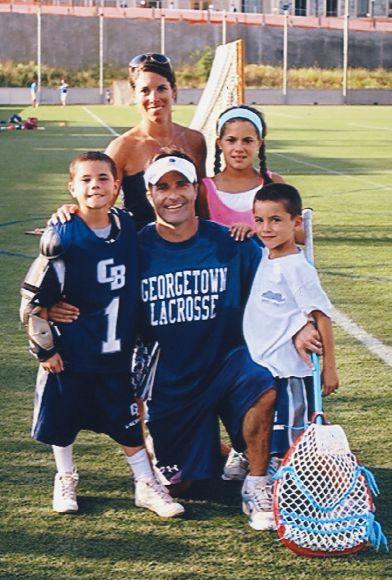
Pat McArdle (C’72, L’77), executive director for athletic relations, remembers Remington’s student leadership not only as team captain but also by example. “Chris had a real focus and determination in whatever he did—obviously in athletics, but also in his personal and professional life. He set goals and went after them with enthusiasm.”
A government and international relations major, Remington worked in financial advising and investment training in Washington, D.C. A resident of Kensington, Maryland, he was a youth lacrosse coach and continued to play on a masters’ level. Remington was an active Georgetown volunteer, serving as president of the Hoya Crease Club, the support group for men’s lacrosse.
Remington died suddenly on January 3, 2018, at age 44. He is survived by his wife, Amy, and their three children, Madeline, Connor, and Cole.
50 GEORGETOWN MAGAZINE FALL 2018
Lauren Geoghegan (C’10) and Jay Austin (G’10)
Lauren Geoghegan (C’10) and Jay Austin (G’10) shared not only love and a life together but also a mutual passion to live simply and to explore the world in a way that maximized human connection. The couple, both 29, quit their jobs—Lauren at Georgetown’s admissions office and Jay from the Department of Housing and Urban Development—to bike around the globe. They blogged honestly about hardships, frustrations, illnesses, and occasional moments of danger as they biked through Africa, Europe, and Central Asia, but what they found overwhelming in their year of cycling was kindness in strangers. Austin blogged in April: “Badness exists, sure, but even that’s quite rare. By and large, humans are kind. Self-interested sometimes, myopic sometimes, but kind. Generous and wonderful and kind. No greater revelation has come from our journey than this.”
But badness found the couple. On July 29, Geoghegan, Austin, and two other cyclists were killed in Tajikistan in an attack that the Islamic State claimed responsibility for. The assault occurred in the countryside. Assailants rammed a car into the cyclists before attacking and killing them.

On July 25—Day 365 of their journey—the couple posted on Instagram a photo of snow-capped mountains in the Ak-Baital Pass in the Pamir Mountains in Tajikistan. Austin described the 4,655-meter ascent as probably the hardest climb of his life. It was their last post.
Reggie Wiley (C’14)
Reggie Wiley (C’14) embodied the Jesuit and Georgetown commitment to social justice. He was involved with Alternate Breaks, an immersion program offered during the winter and spring breaks for students who want to do service and social justice work. He was a leader on Habitat for Humanity projects and was part of the D.C. Schools Project, which provides mentoring and tutoring to youth and adults learning English. Not without a playful side, Wiley’s choreography and dancing talents guaranteed loud applause at performances by Ritmo y Sabor, Georgetown’s Latin dance group. After graduating, Wiley returned to his hometown of Houston, Texas, and joined EMERGE, where he worked to prepare highperforming students from underserved communities to attend and graduate from college. Wiley later joined 270 Strategies as a grassroots organizer.
Wiley passed away in July 2017, from asthma-related complications. His passion for social justice continues to drive the work of his family and friends. Wiley inspired his partner, Alejandro Freeman, to co-found a college readiness technology company. Freeman and one of Wiley’s friends, Naureen Ali, created a scholarship for EMERGE students in Wiley’s memory.
Learn more at https://bit.ly/2QnI1D4.

VISIT magazine.georgetown.edu 51
Photo: Simplycycling.org
Photo: Trisha Cornwell
Pope Francis, the Pope of Dialogue
by Mark Bosco, S.J., Ph.D., Vice President for Mission and Ministry
In his 2017 book Jorge Mario Bergoglio: Una biografia intellettuale, Massimo Borghesi attempts to excavate the intellectual “pattern of thinking” of Pope Francis by exploring the Pontiff’s engagement with some of the 20th century’s greatest minds. One name that looms large in Borghesi’s account is the Italian-German theologian and professor Romano Guardini (1885–1968). Guardini proffered powerful theological insights that addressed the great challenges of the 20th century: fascism, existentialism, history, progress, and modernity, to name a few.
The encounter between Francis and Guardini resulted in the Pope’s reimagining of the Hegelian notion of history along the lines of dialogue rather than dialectic. Hegel proposed an understanding of history characterized by perfection and progress. Guardini, however, proposed an alternative understanding of history—one that might be characterized as “reconciliation thinking”—not a naïve, optimistically progressive process but a synthesis of polar opposites into a higher, transcendent plane.
For Guardini, it is the Church—as a living container—that provides the space in which the Holy Spirit can forge this new synthesis, a synthesis that operates on a transcendent plane of coexisting elements that pull in opposite directions. He argued that in Christ and in Christ’s Church, the contraries of life are resourceful tensions. They become creative contraries. Through its traditions, its sacraments, and its witness, the Church, too, is conceptualized as a tension of opposites within a unity. Thus Guardini argues for a Catholic form of dialogue in which Christ is the “both/and” —the unifier, as St. Paul suggests, of all things: men and women, Jews and pagans, the enslaved and the freed.
As a young Jesuit, Bergoglio was drawn to the idea of a constructive tension of polarities through the Spiritual Exercises of St. Ignatius. The Exercises encourage a person to simultaneously have faith as if all depends on
God, yet to act as if everything depends on us. This classically Jesuit position of holding polarities together allows the follower of Christ to be deeply in the world, yet open to the transcendent—to be contemplatives in action.
For Bergoglio, Guardini’s reconciliation thinking suggests that polarities need each other. They need to be in a constructive tension that resists the zero-sum dialectics of ideology and opts for the more holistic approach of dialogue. To fail to engage in this dialogue is to drive out human realities and pastoral complexities of life. In doing so, you sin against mercy, which is always attentive to the experiences of the human person. This is what the more seasoned Francis means when he insists that “reality is superior to the idea.” To do otherwise is to end up in some form of idealism at best, or nostalgia for something long dead at worst.
Francis learned that dialogue is not merely a practice, but a virtue. This means that institutions like Georgetown University must find ways to create dialogical spaces where fragmentation and deconstruction are not the guiding principles of our thinking.
In the current age of political disintegration, the university must become a sanctuary of dialogue constituted by a mutuality that seeks truth in community, puts winning on hold, and resists the zero-sum game of competition that infects our politics and media frenzies. It confronts the fallacy of intellectual manipulation and imposition masquerading as education. It is, in short, its own end.
Dialogue is a sacred space where God can be heard and where God adapts to the blessed particularities of individuals. I think this is Francis’s call to Jesuit higher education.
Let us know what you think about The Last Word at magazine@georgetown.edu.
52 GEORGETOWN MAGAZINE FALL 2018
The more seasoned Pope Francis insists that reality is superior to the idea.

NONPROFIT ORG U.S. POSTAGE PAID PERMIT #3901 WASHINGTON, DC 20007 GEORGETOWN MAGAZINE 2115 Wisconsin Avenue NW, Suite 500 Washington, DC 20007




















 by JANE VARNER MALHOTRA
by JANE VARNER MALHOTRA

















 by CHELSEA BURWELL (G’16)
by CHELSEA BURWELL (G’16)





































